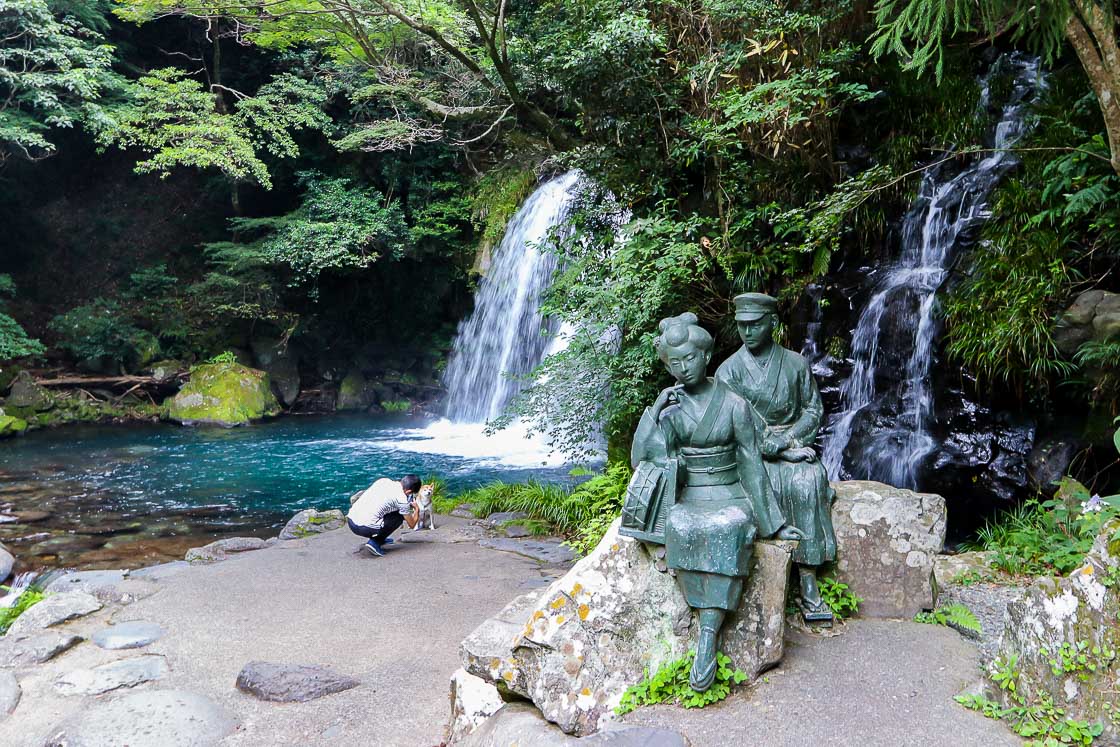10 places to visit in the Izu Peninsula
Located only an hour away from the Tokyo Metropolis along the Pacific Coast, the Izu Peninsula is a great place to visit for those who are looking to escape the city. The peninsula is also one of only nine designated UNESCO Global Geoparks in Japan, an appointment that acknowledges the region's geological significance. The coastline of the peninsula is marked by beaches, seacliffs and large rock formations, while the interior is mountainous with an abundance of lush greenery. Thanks to its subtropical climate, the Izu Peninsula is a comfortable place to visit all year round.
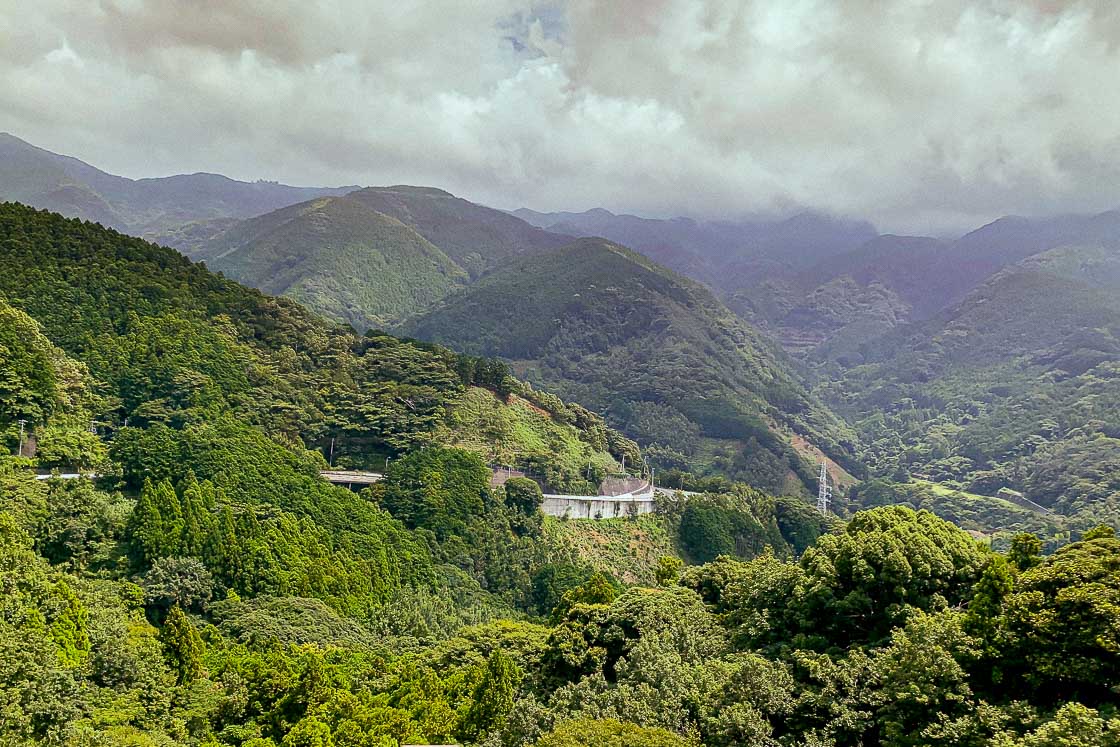
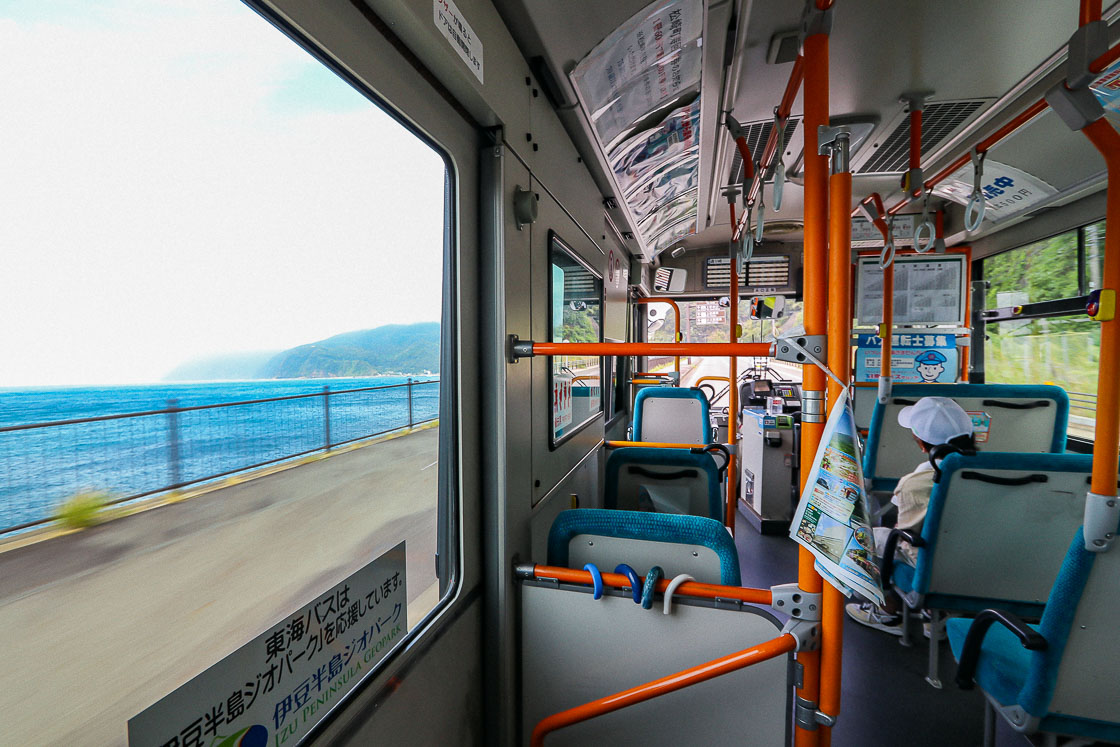
Transportation passes tend to make travelling more convenient, and it is the same when visiting the Izu Peninsula. Train service along the eastern coast goes only as far as Izukyu Shimoda Station near the southern tip, while the northern end is served by a train line from Mishima to Shuzenji near the middle of the peninsula. A good bus network covers the rest of the region and is indispensable for exploring the region by public transport.
The Izu Dream Pass is a pass that covers train and bus travel on the Izu Peninsula as well as ferry access to it. There are three versions of the Izu Dream Pass: Koganeji Route, Wasabiji Route and Fujimiji Route, each one offering a different theme and covering different parts of the peninsula. Ferry service across Suruga Bay - Japan's deepest bay - connects Shimizu Port and Toi Port in about 70 minutes. Fully covered by the Izu Dream Pass, the ferry ride offers great views of the bay and of Mount Fuji when the weather is clear. Separately, there is the bus-only Minami Izu Free Pass which covers the southern tip of the peninsula.
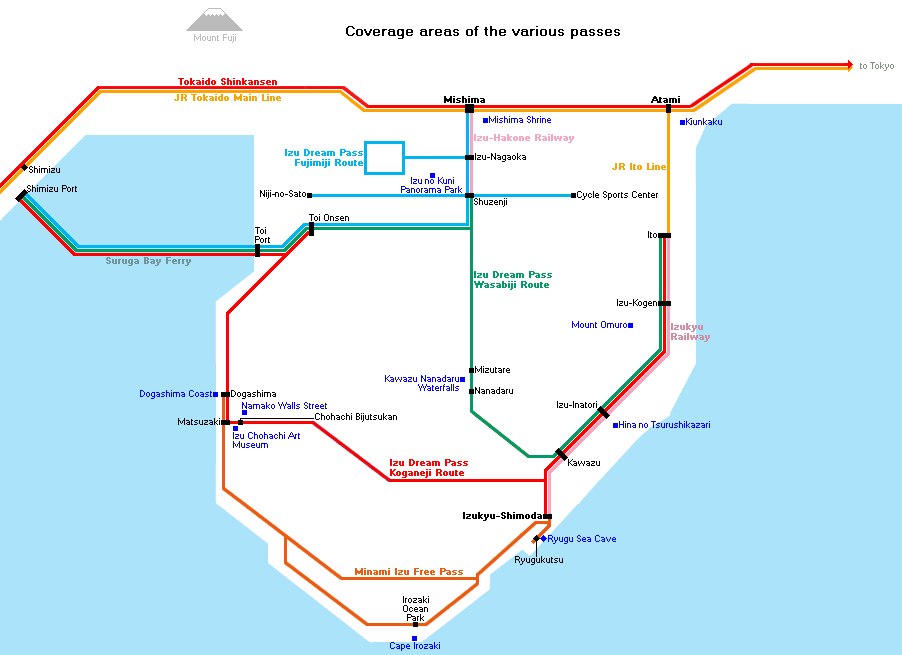
There are a variety of accommodation facilities available on the Izu Peninsula, from Japanese-style ryokan to beachside hotels and pensions, western-style, family-run lodging. Prices range from affordable to pricey, and meals may or may not be included.
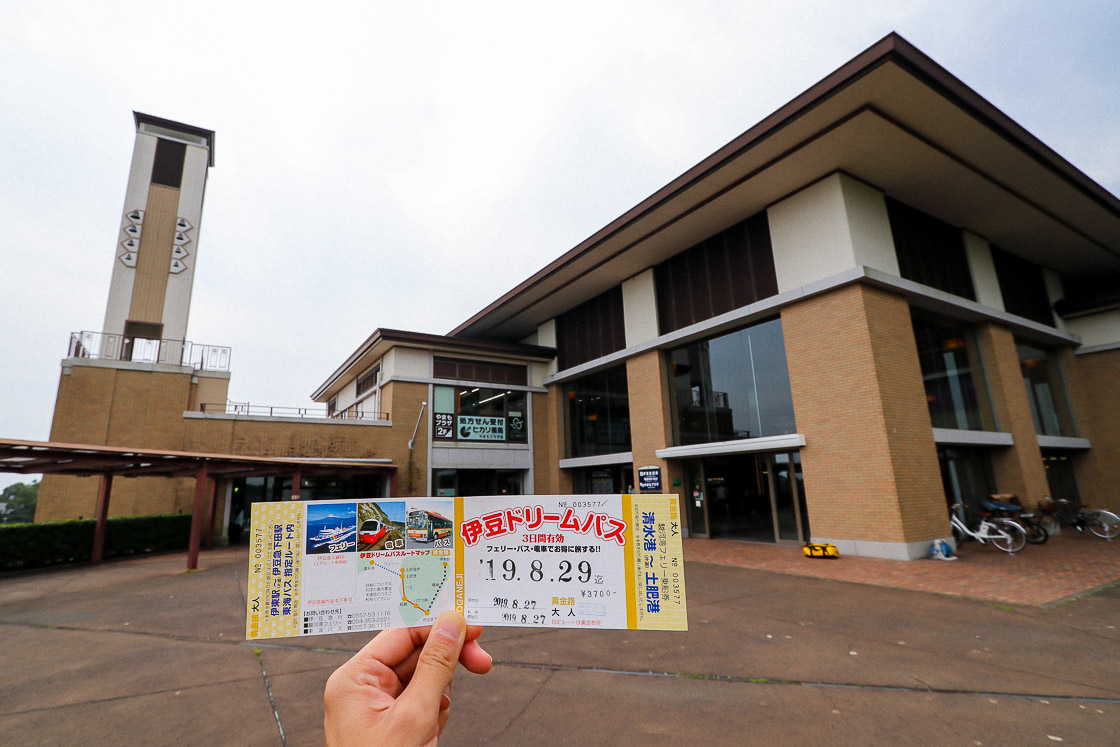
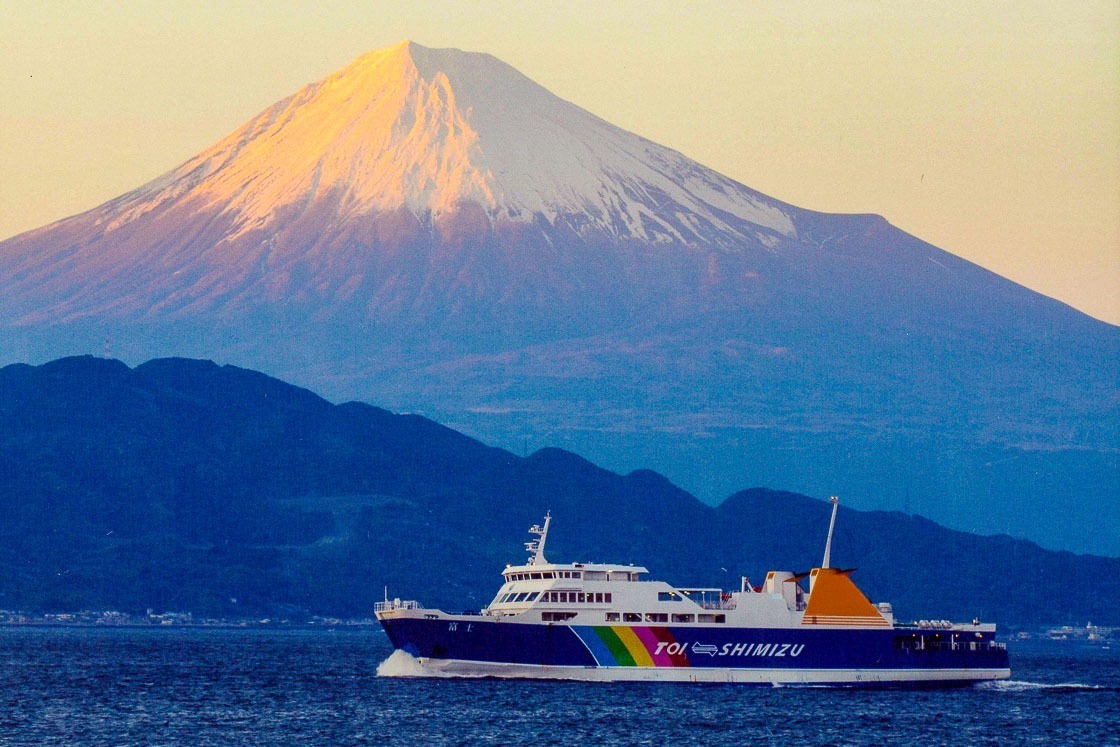
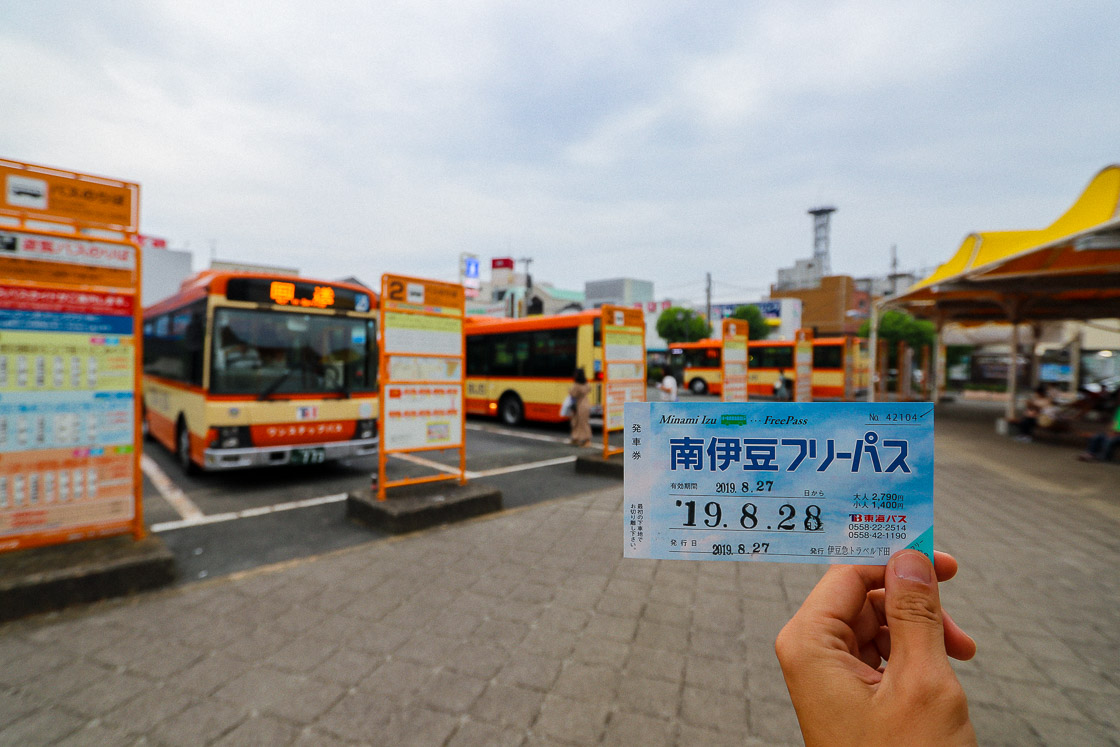
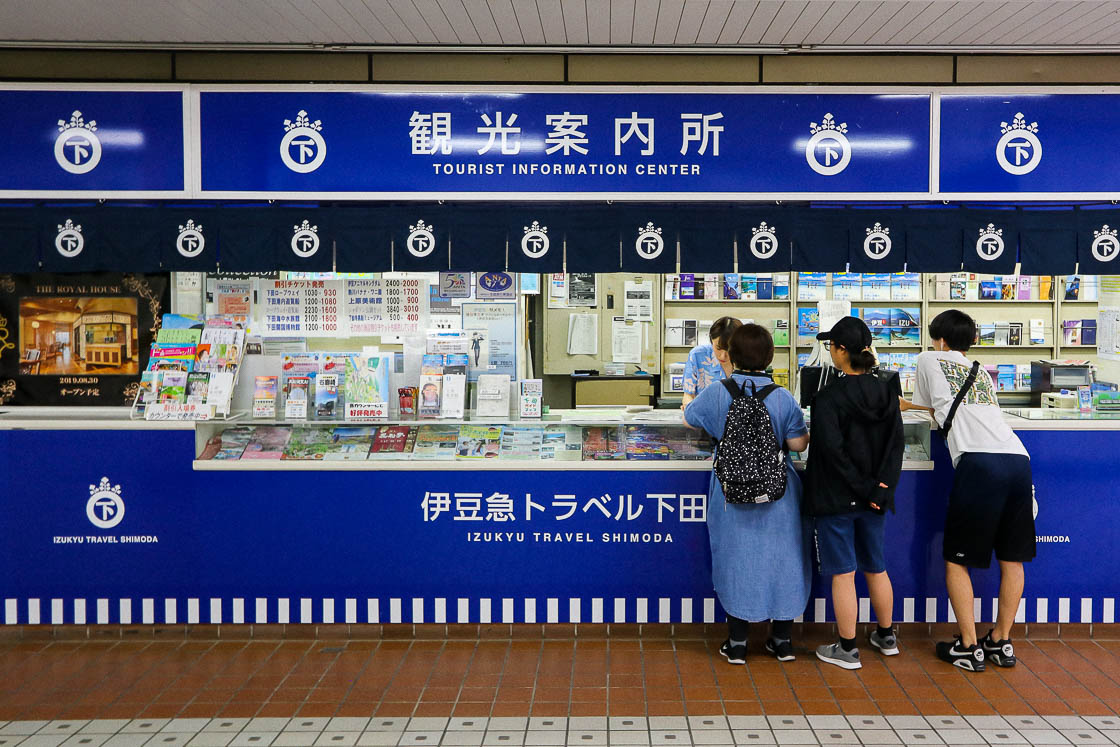
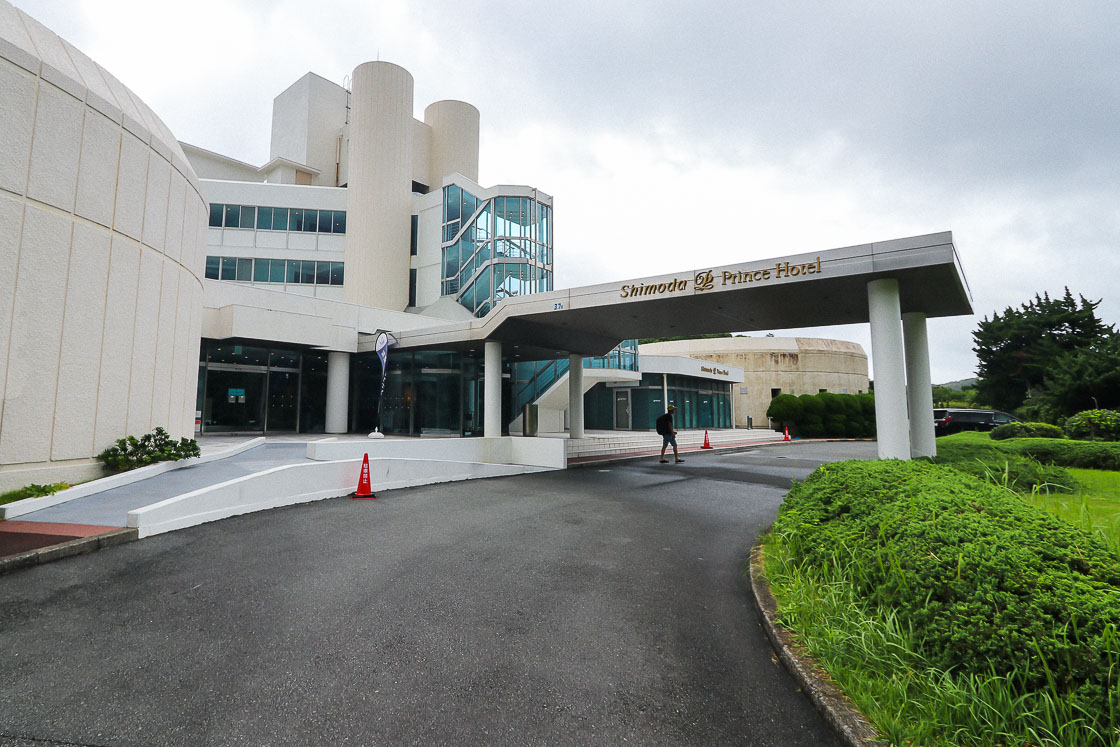
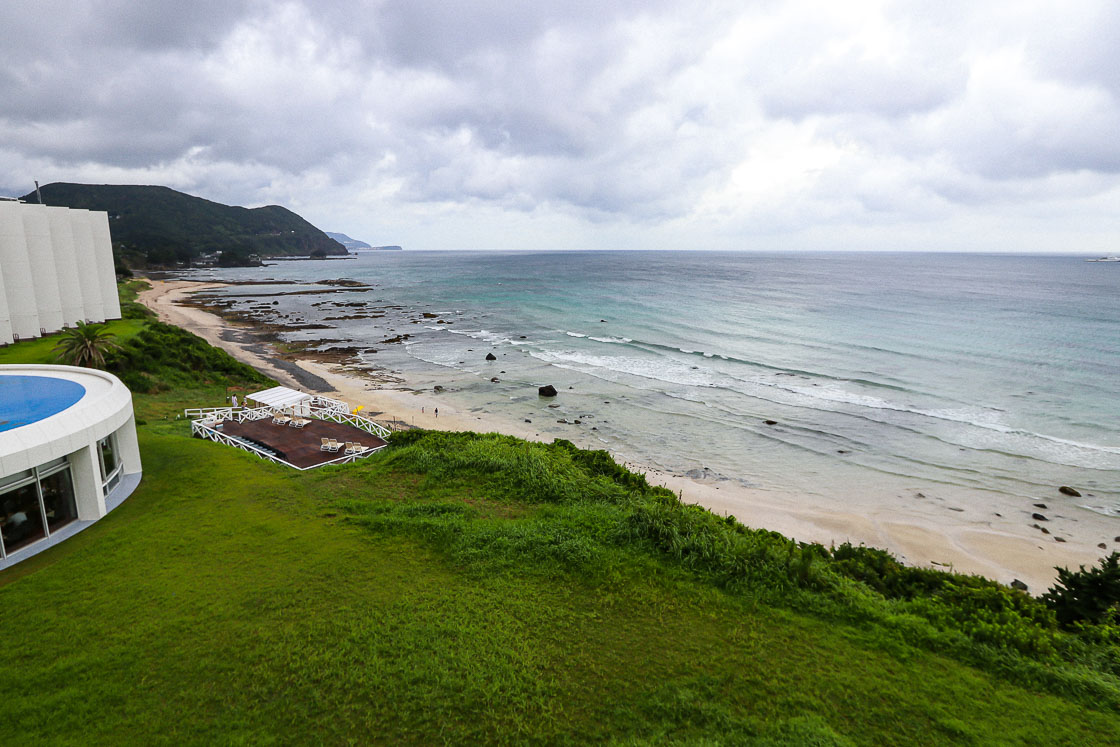
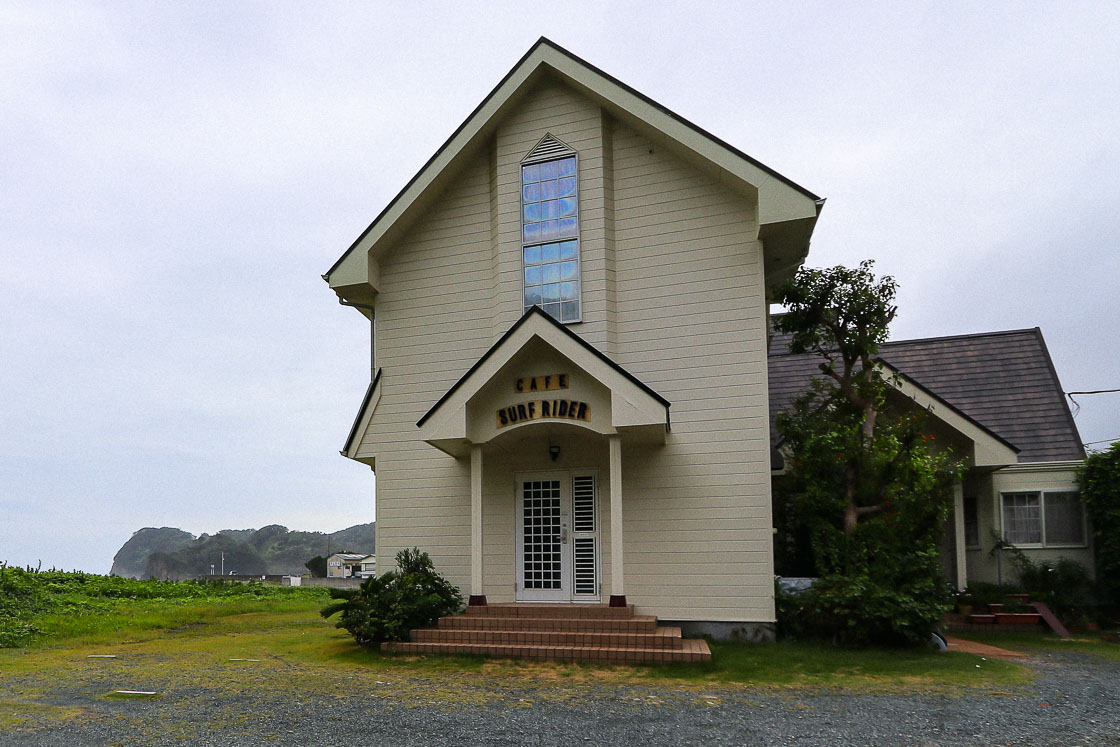
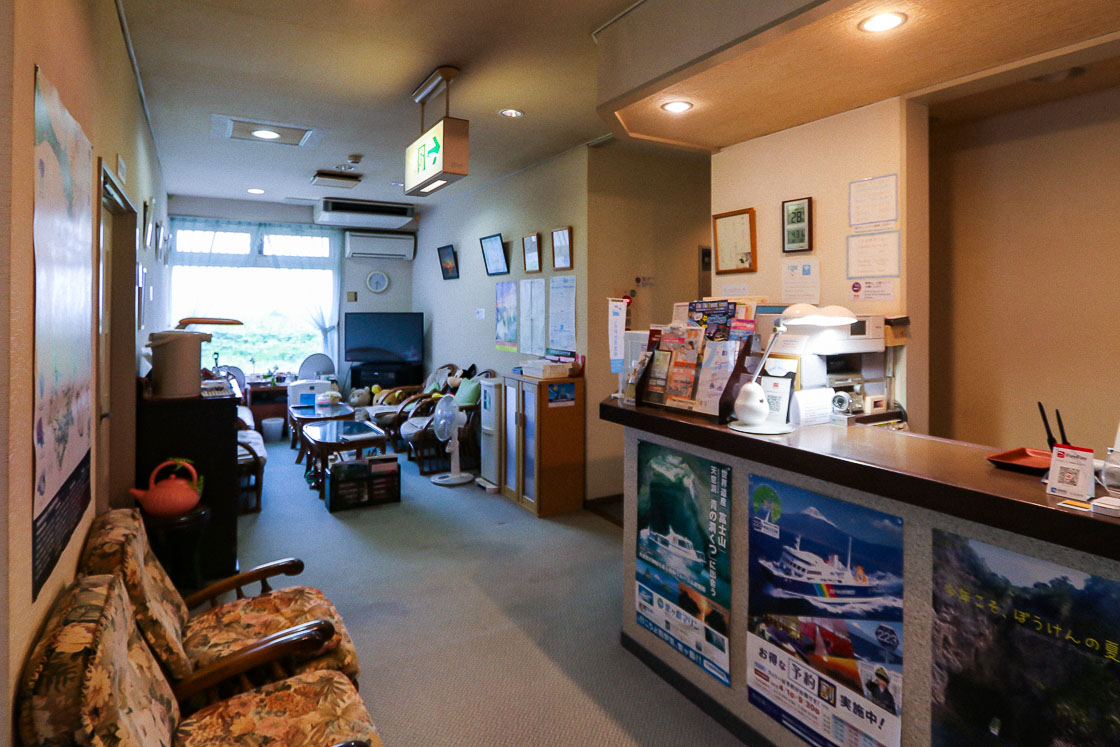
Below are ten sightseeing spots in the Izu Peninsula that can be accessed by using one or more of the passes available.
Kiunkaku Residence in Atami
Kiunkaku was originally built in 1919 as a private villa, but was converted to a luxury Japanese inn and remained in business until 1999. Of all the buildings on the premises, only the gate and two Japanese style buildings remain from the original construction, while the rest were added on over the years. Inside, visitors can see traditional Japanese architecture and design, as well as Western design from the early 20th century. The mix of Western and Japanese influences makes Kiunkaku an interesting spot to see how Japanese tastes in interior design developed over time. In addition to the buildings, the garden is also a lovely place for a stroll and offers different views of the premises.
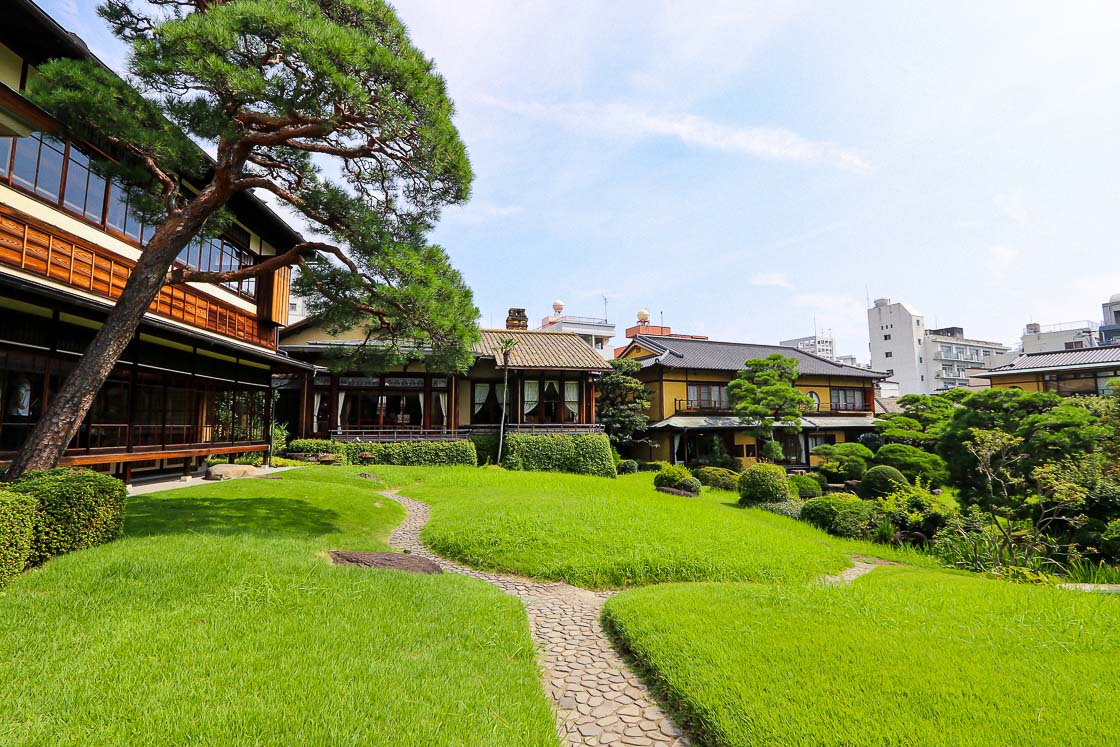
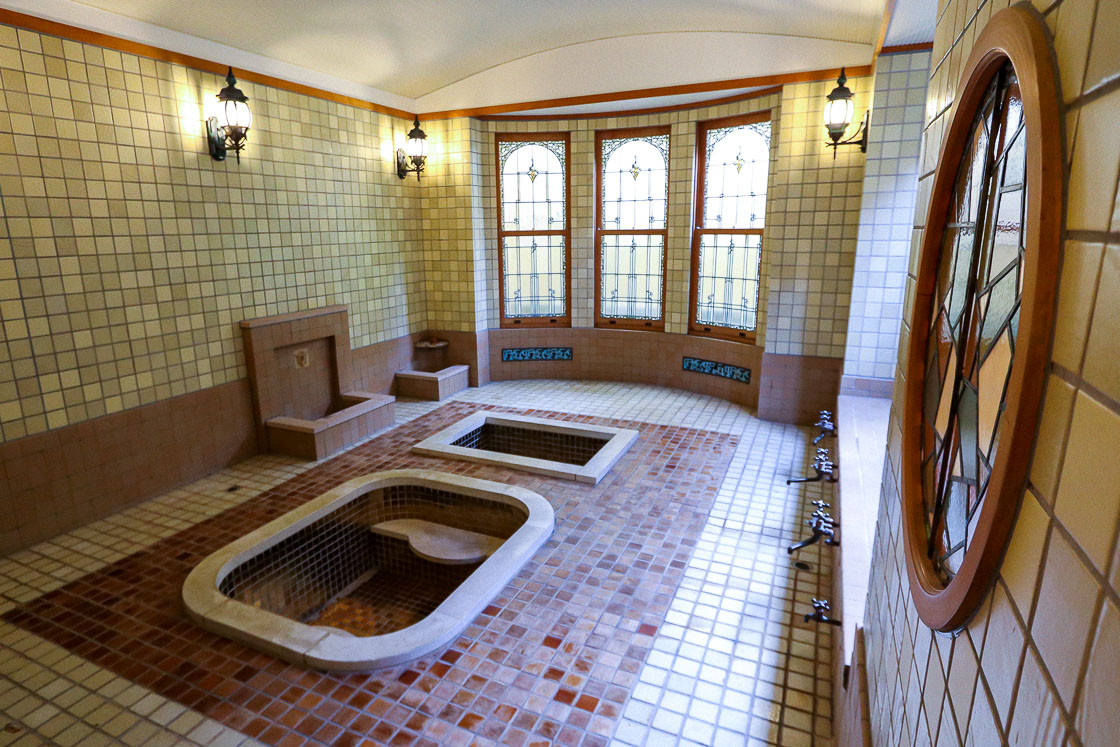
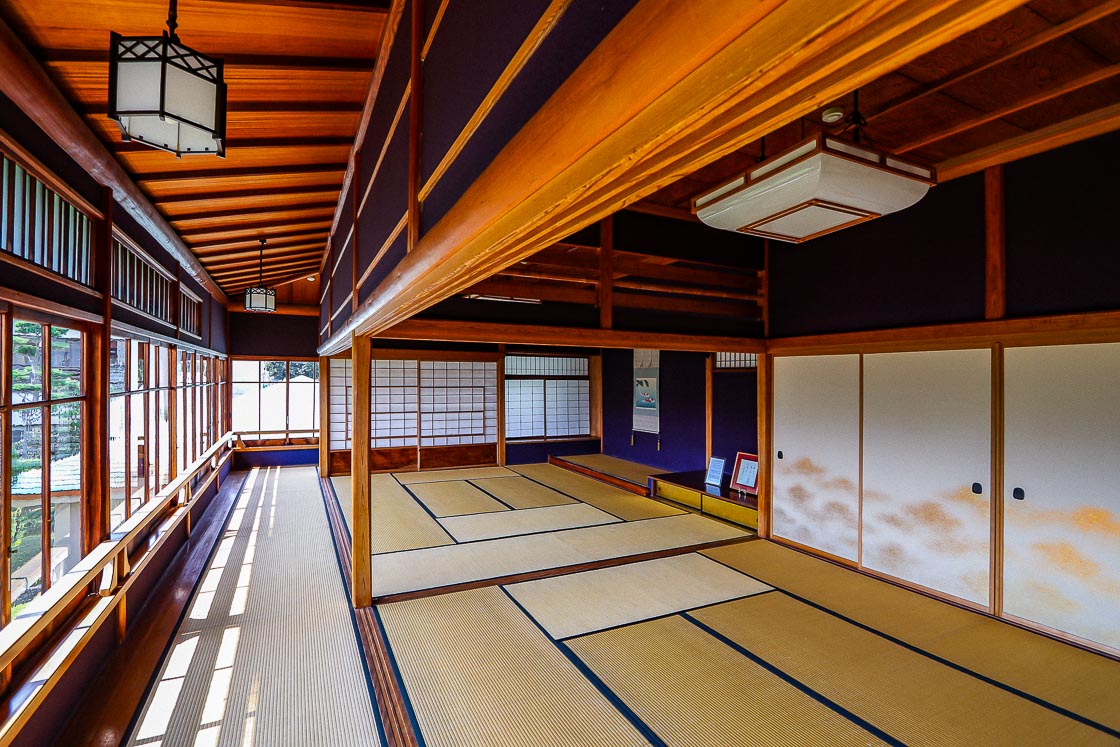
Mount Omuro in Ito
Mount Omuro is a 580 meter tall mountain, and one of the largest volcanoes in the Izu region. It was an active volcano about 4000 years ago, and lava flow from its eruptions formed the highlands in the immediate vicinity and the nearby Jogasaki Coast. Today, the mountain is a symbol of Ito City, and it has become a popular tourist destination. A chairlift brings visitors to the peak, where a one kilometer walking trail leads around the crater. Visitors will be able to get views of the city and the coastline from the top, as well as seasonal flora.
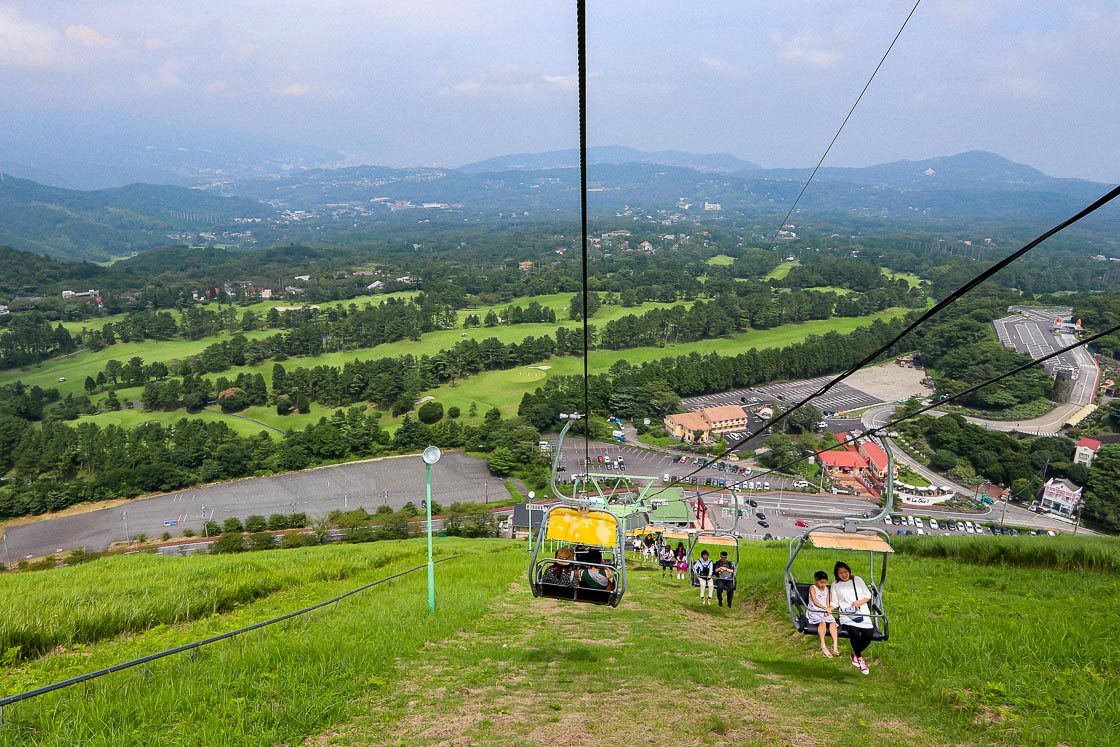
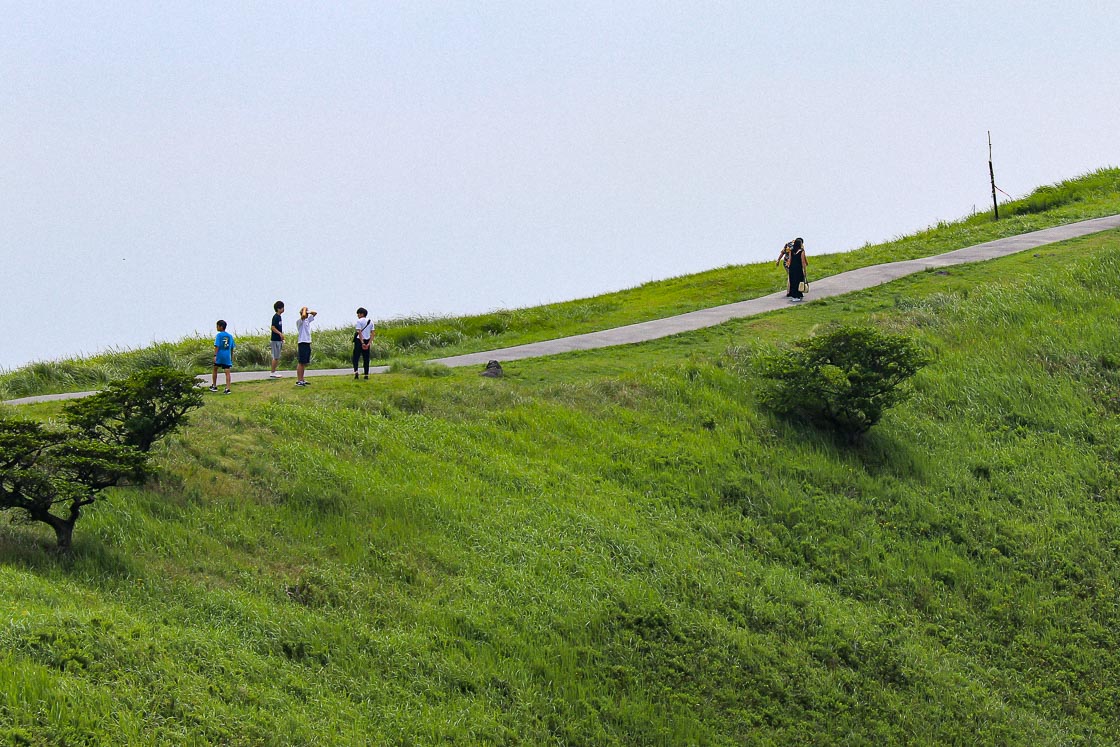
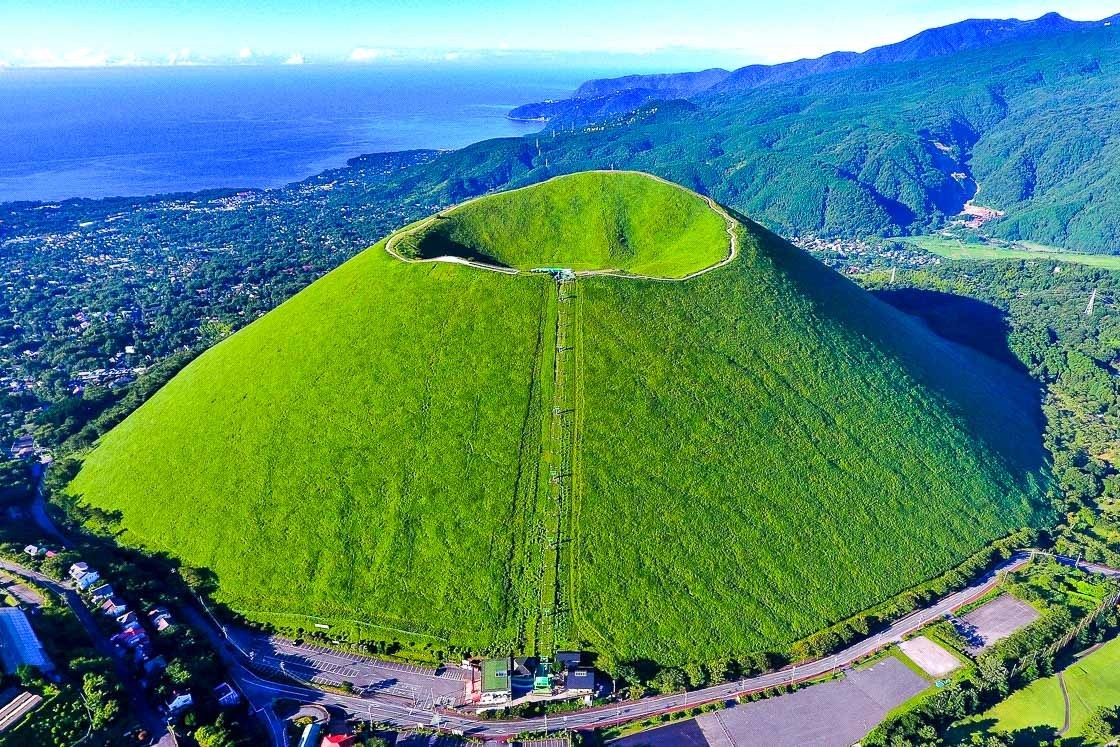
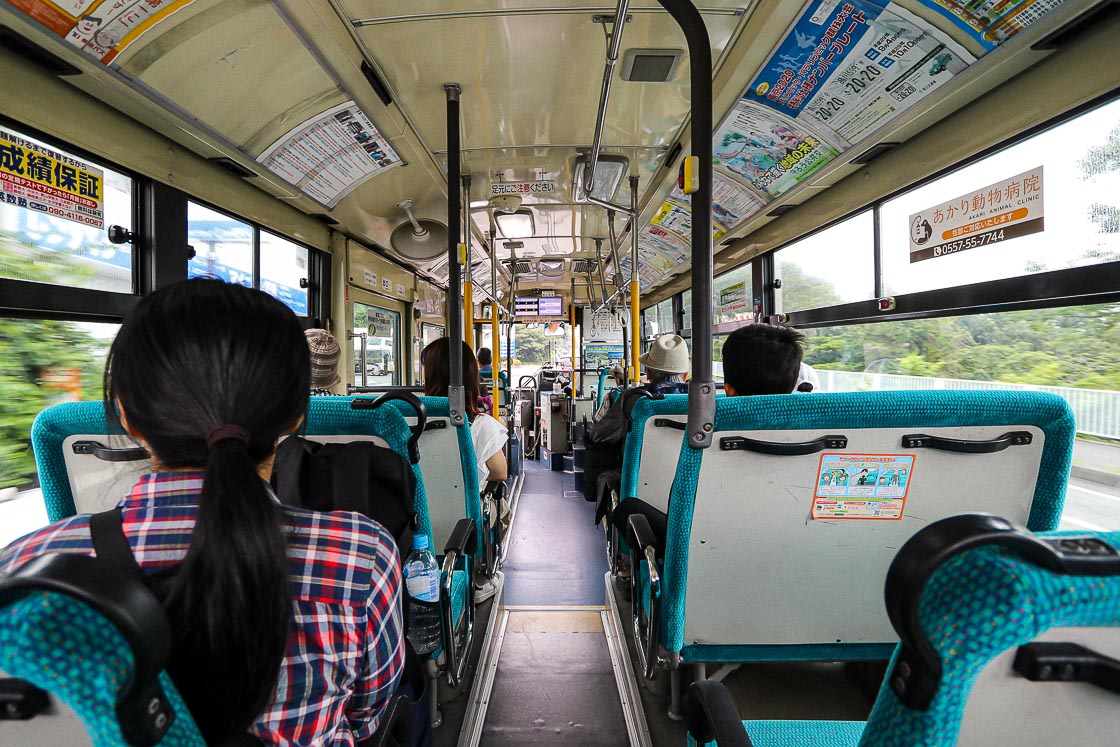
Kawazu Nanadaru Waterfalls in Kawazu
The Kawazu Nanadaru (Kawazu Seven Waterfalls) are a series of waterfalls located in a gorge in the middle of the Izu Peninsula. In addition to affording picturesque views of waterfalls in the forest, the area is also famous as the backdrop for Japanese writer Kawabata Yasunari's well-known novel, The Dancing Girl of Izu. A walking trail leads between the seven waterfalls, and the best way to visit all seven is to start from the one at the top and walk down.
Visitors to the area typically start their journey from Kawazu Station and take the bus to Mizutare from where it is about a 10 minute walk to Kamadaru, the waterfall at the top, before catching the return bus from Kawazu Nanadaru. Along the way, are statues depicting characters from Kawabata's novel. It is not difficult to guess the feelings of the characters even without prior knowledge of the book.
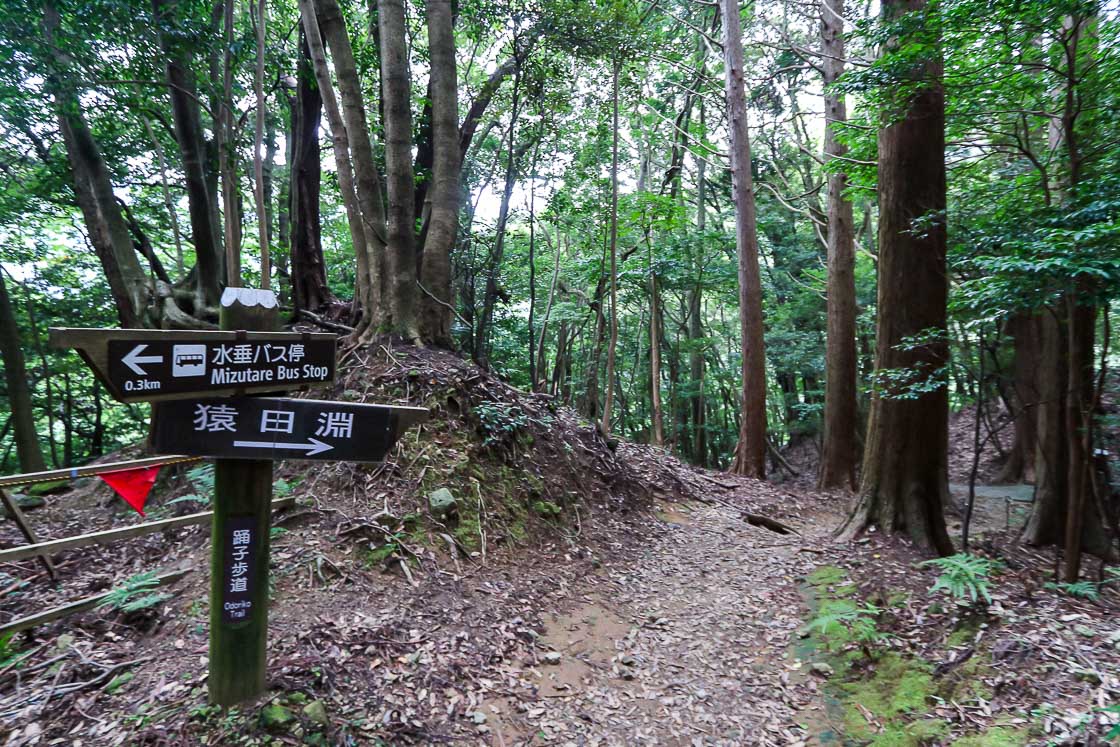
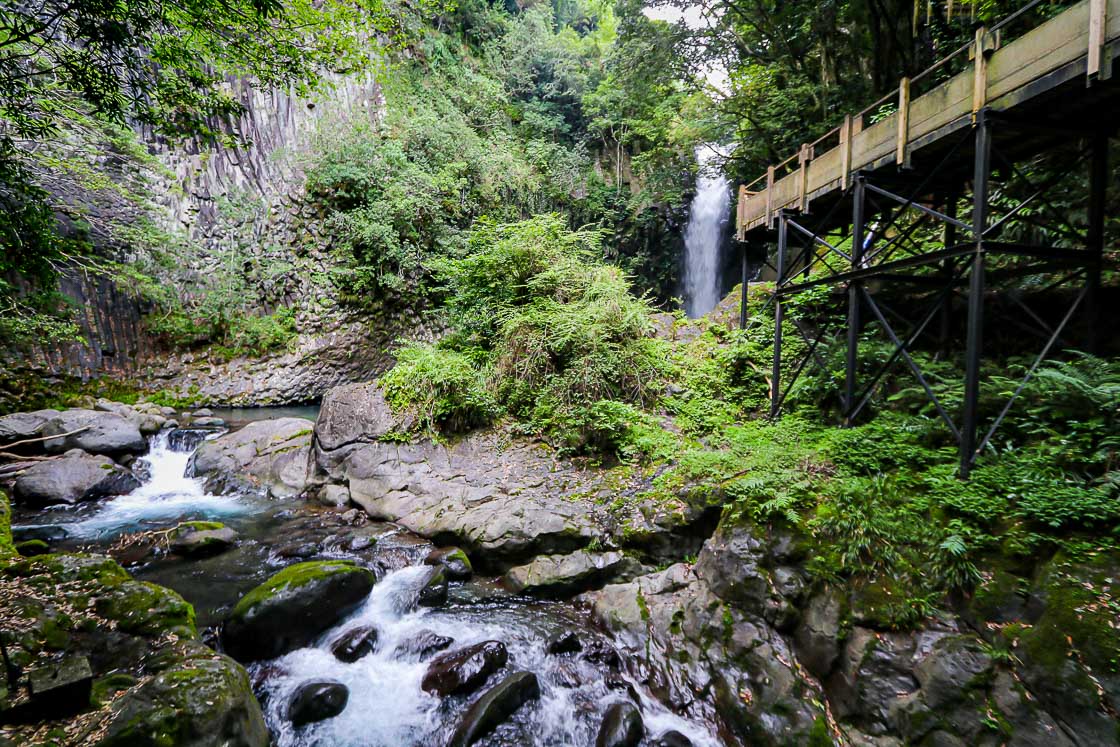
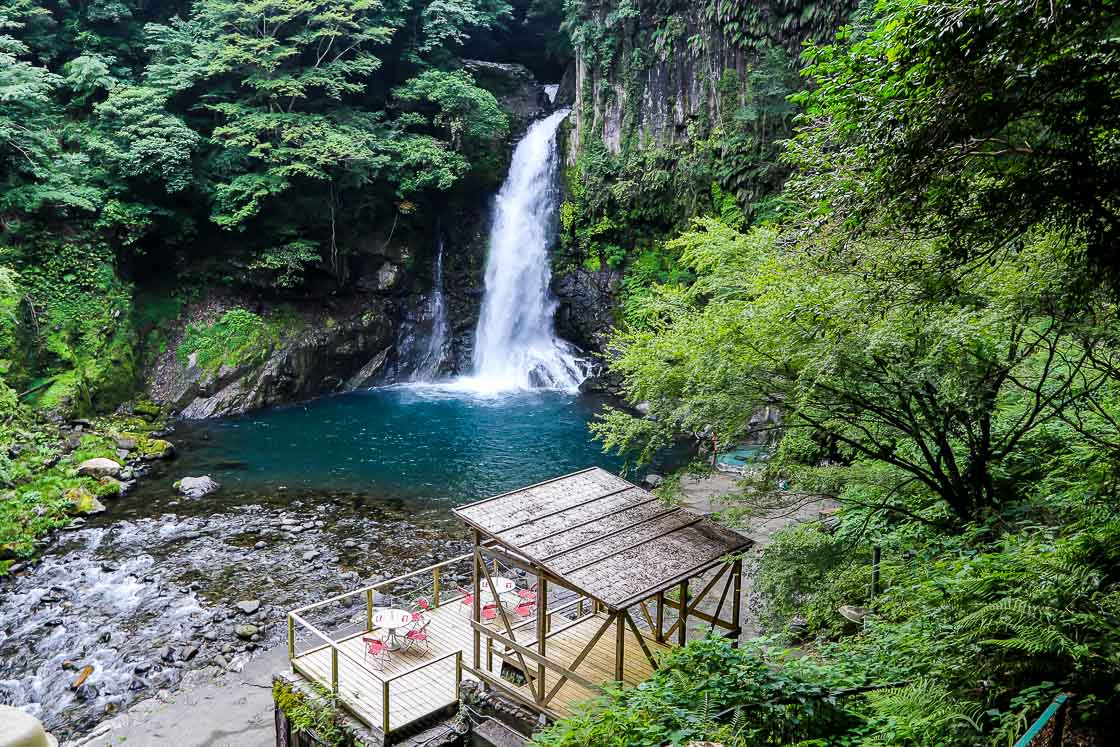
Hina no Tsurushikazari, traditional hanging decorations, in Higashi Izu
Hanging doll decorations are a traditional craft in Higashi Izu, and the Hina no Tsurushikazari is one of the few places in the area to see them. The shop displays many hanging dolls and offers doll making activities as well. As a testament of the importance of this local craft, these hanging doll decorations can also be seen at Izu-Inatori Station, the closest train station.
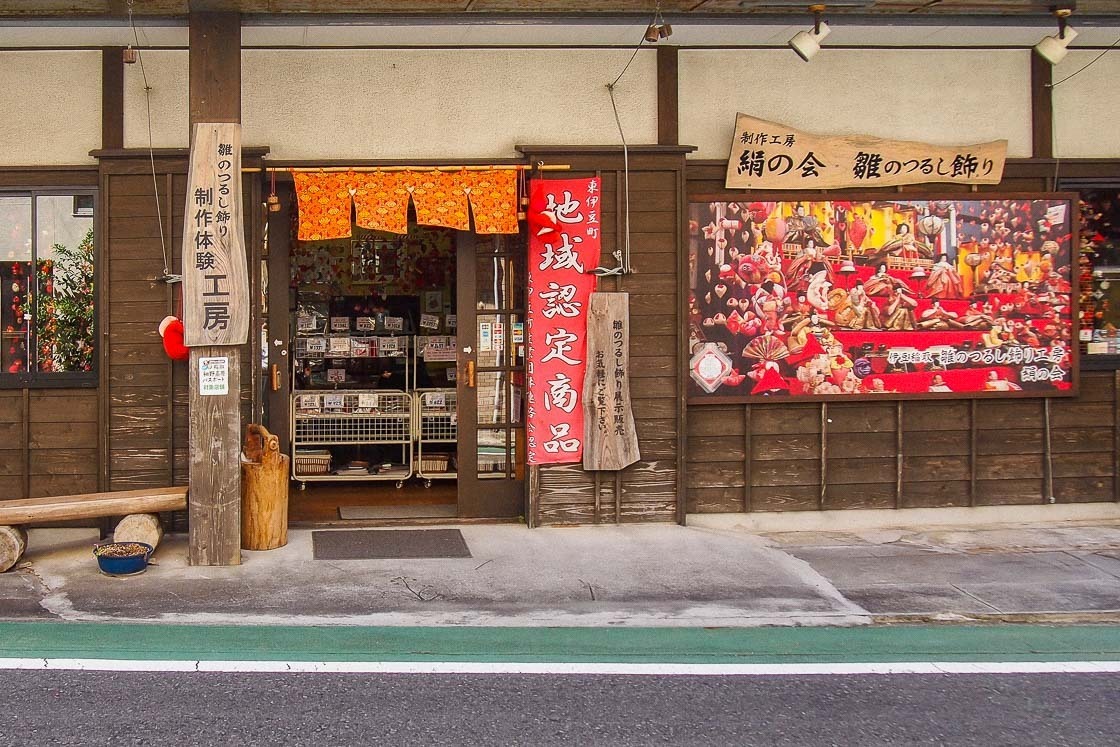
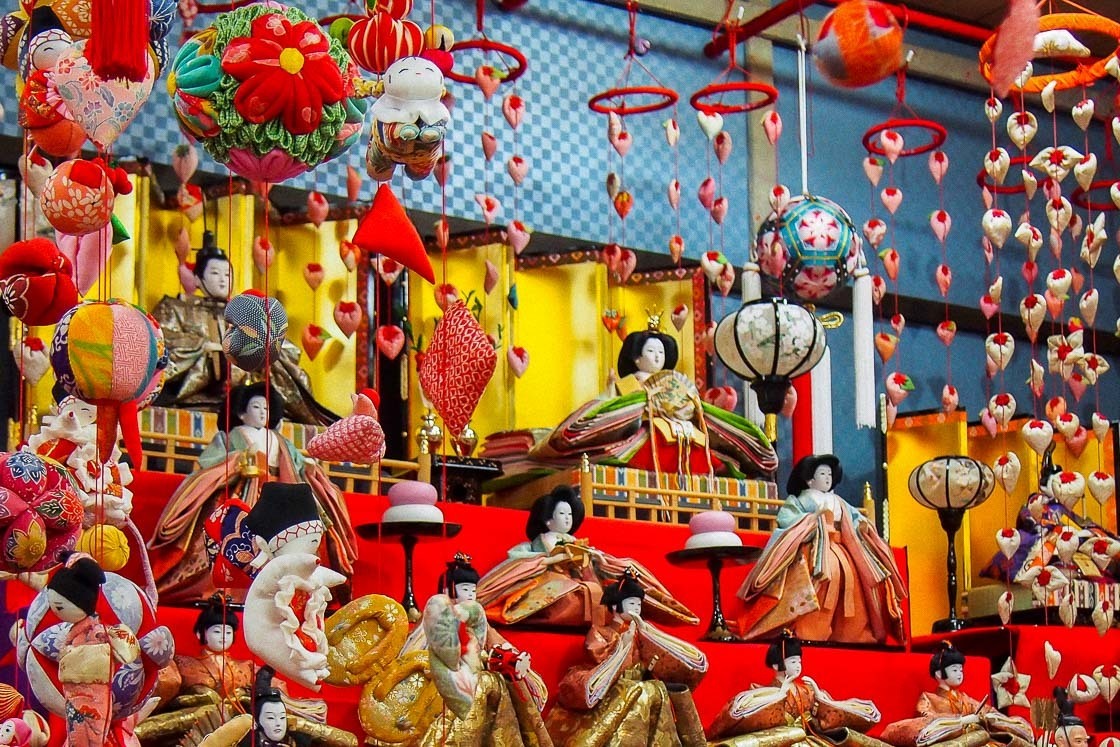
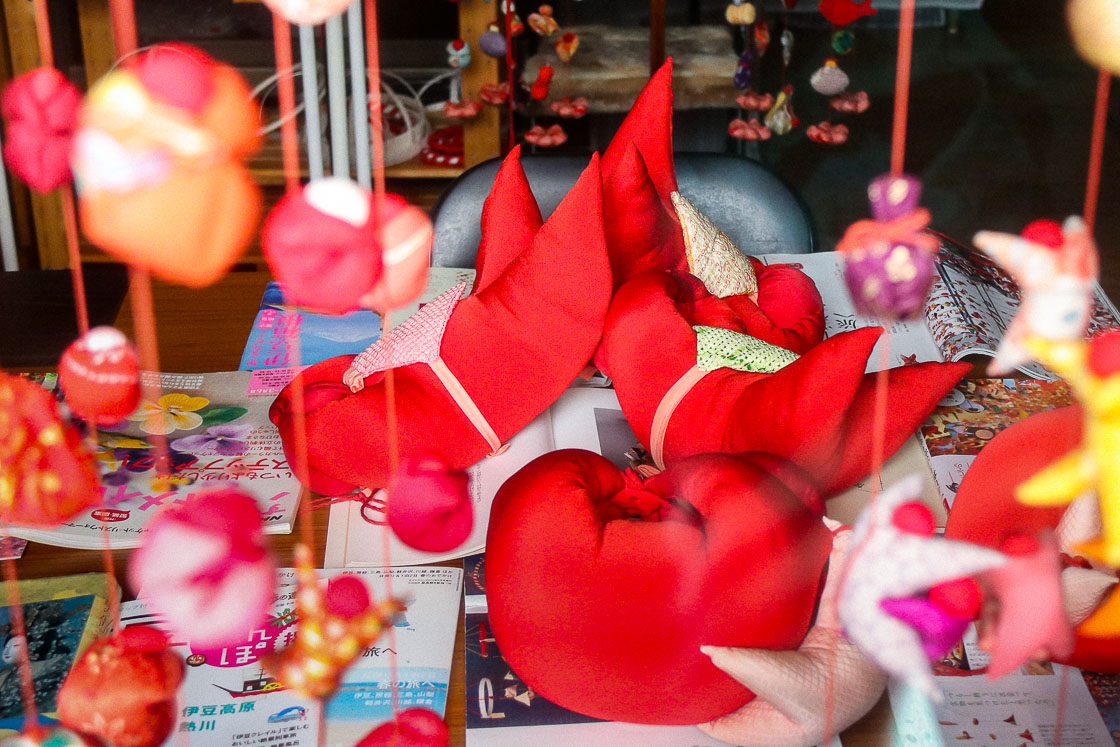
Ryugu Sea Cave in Shimoda
Shimoda is the gateway to the southern tip of the Izu Peninsula and where most of the rugged coastline can be seen. The area offers many beautiful beaches as well as interesting rock formations, and the Ryugu Sea Cave, which has been around for a long time and slowly eroded into shape over the centuries by the ebbing waves, is one of them. Today, the sea cave is a popular tourist spot after being featured in commercials and television dramas.
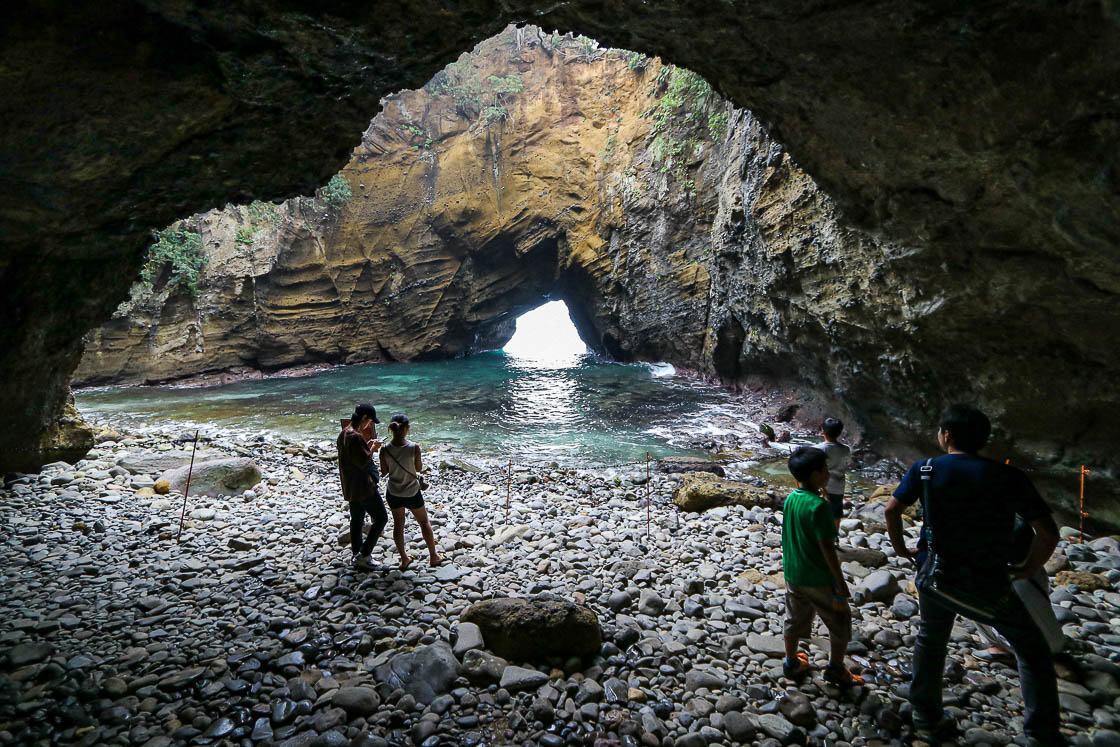
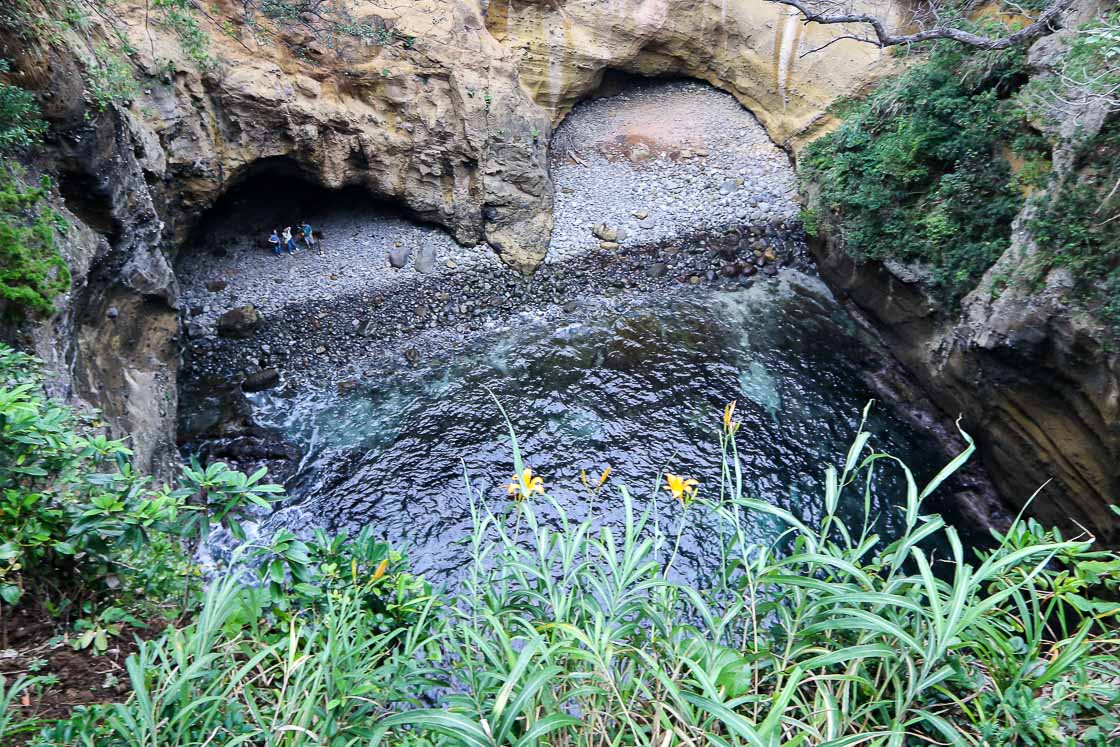
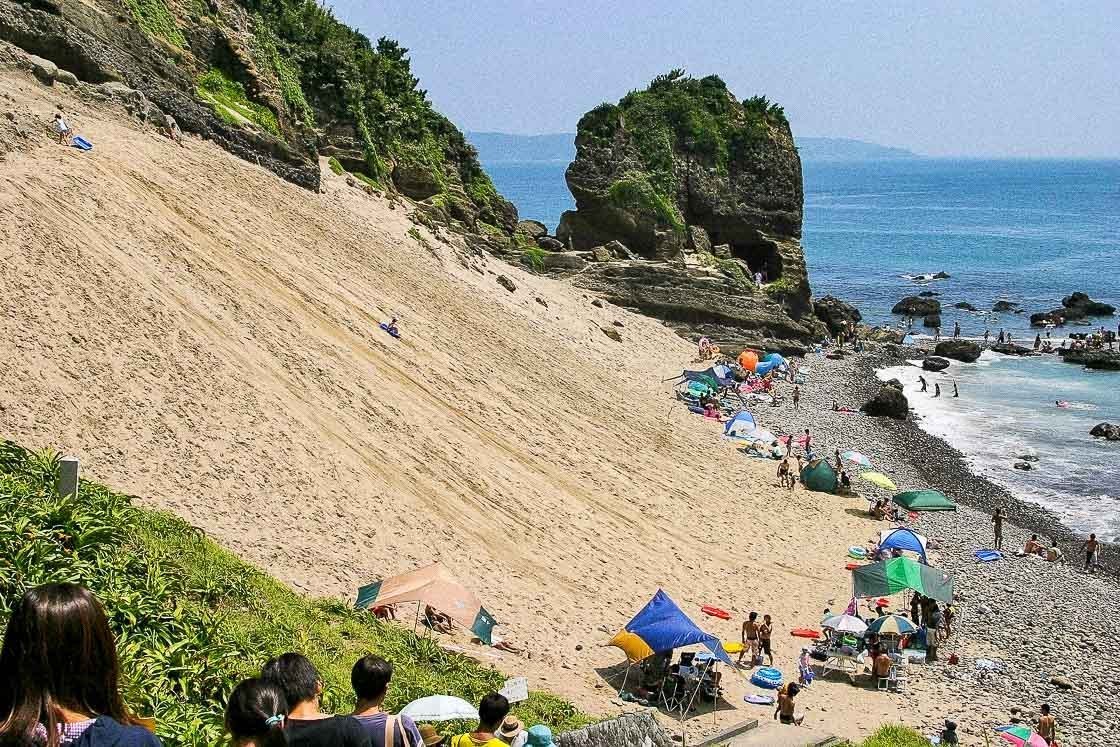
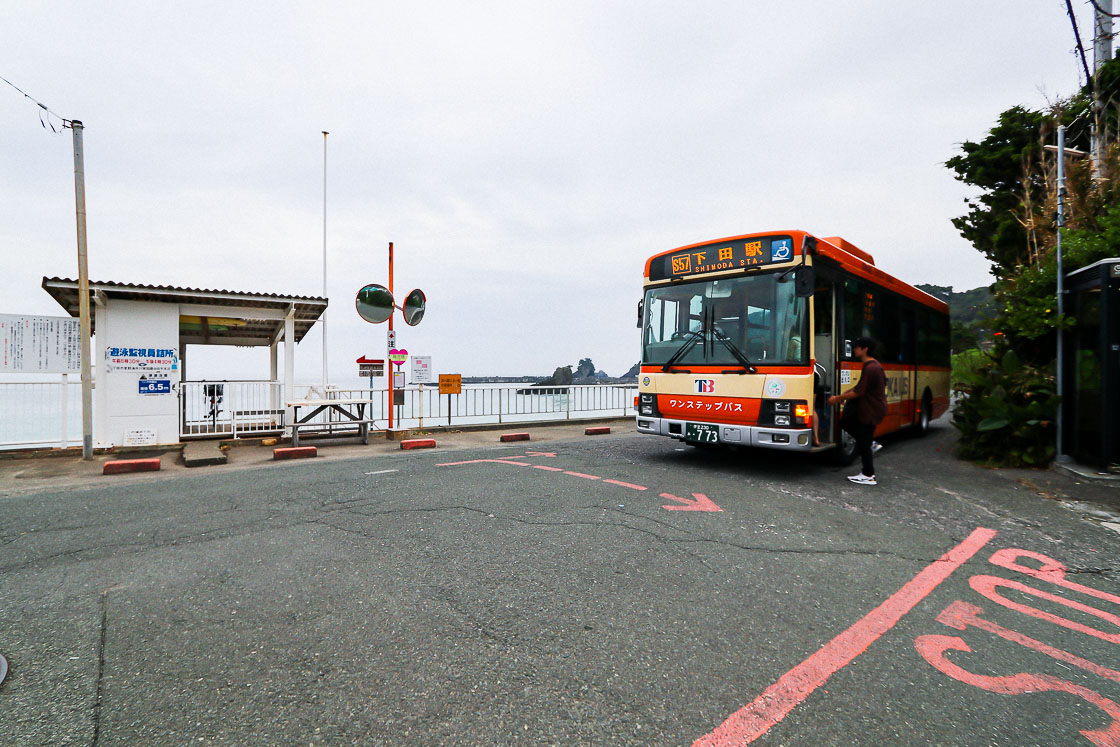
Irozaki Ocean Park in Minami Izu
Cape Irozaki is the southernmost point in the Izu Peninsula, and can be accessed from Shimoda using the Minami Izu Free Pass. The Irozaki Ocean Park stands at the entrance to the cape and is the best place to access and visit it. A visit to the Irozaki Ocean Park starts at the large visitor centre that has displays explaining the geology of Irozaki and the Izu Peninsula. From there, an easy walking trail leads to the tip of the cape in about 10-15 minutes.
About three quarters down the walking trail stands the Irozaki Lighthouse, the southernmost lighthouse on the peninsula. Beyond the lighthouse, rugged coastline can be seen to the left and right of the trail, and the vast ocean to the front. There are two shrines towards the end of the walk, one dedicated to the god of maritime safety, the other dedicated to romantic relationships.
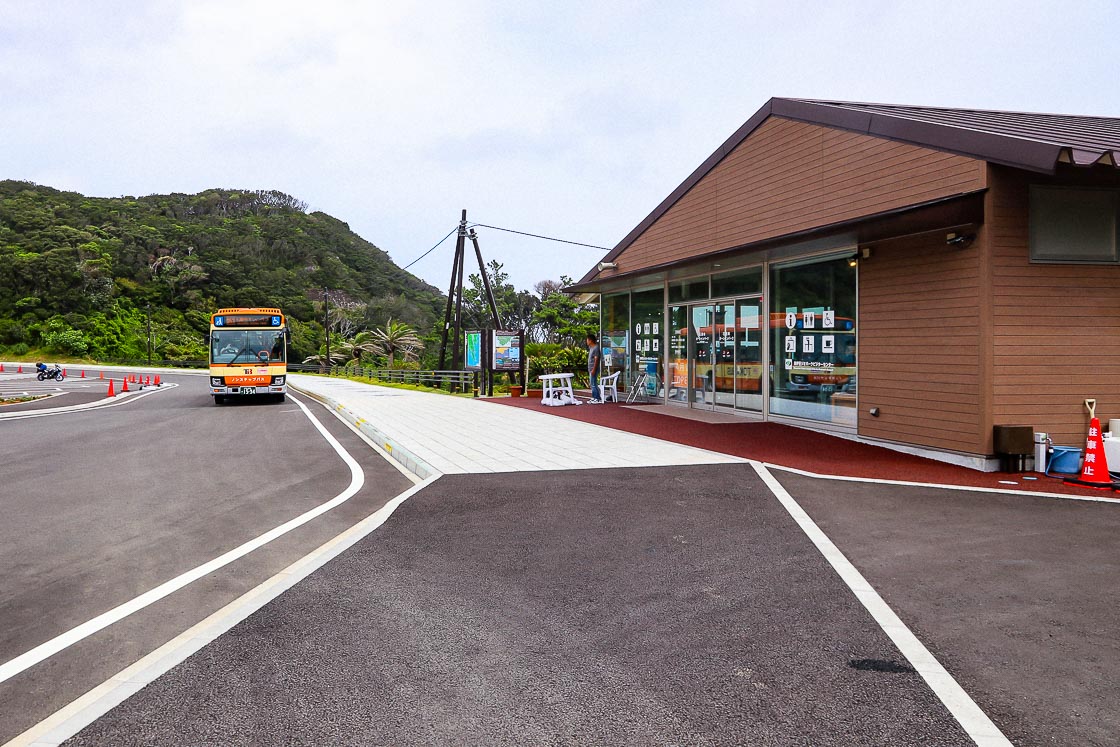
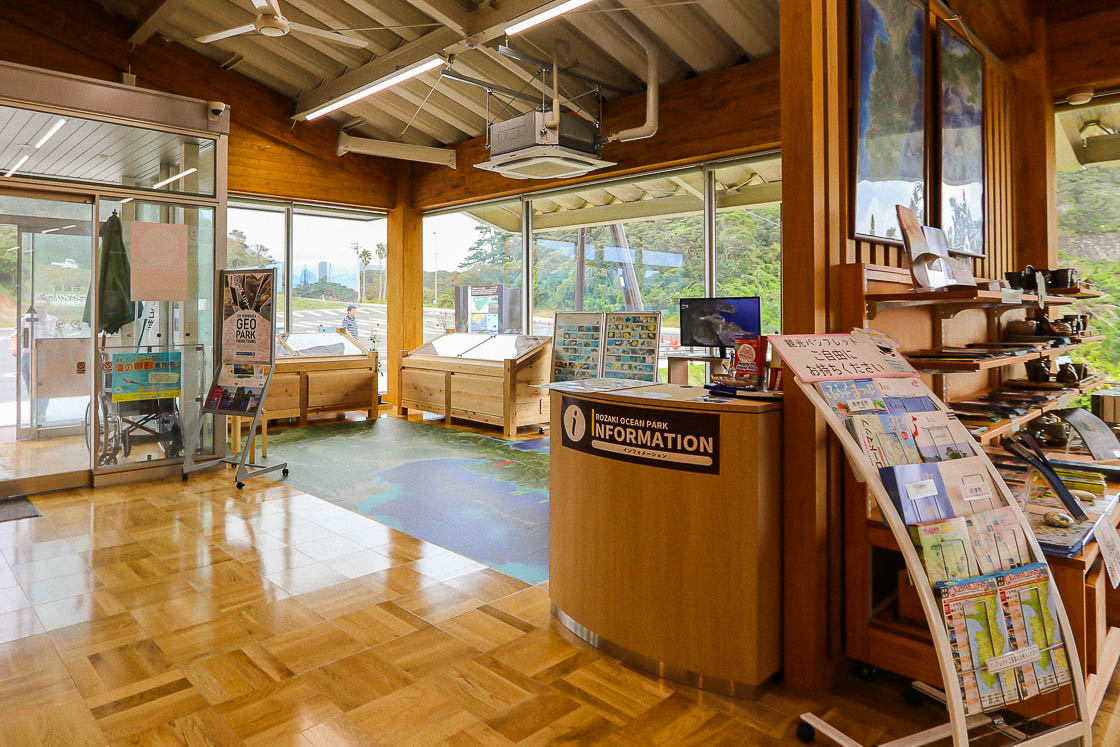
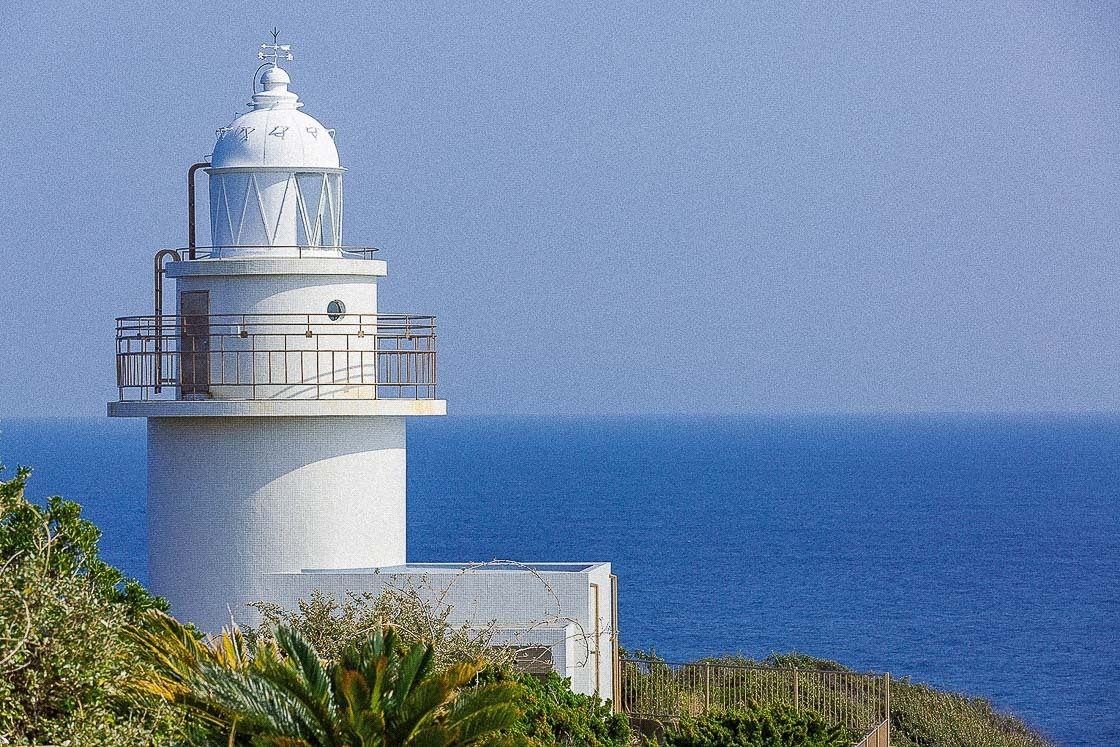
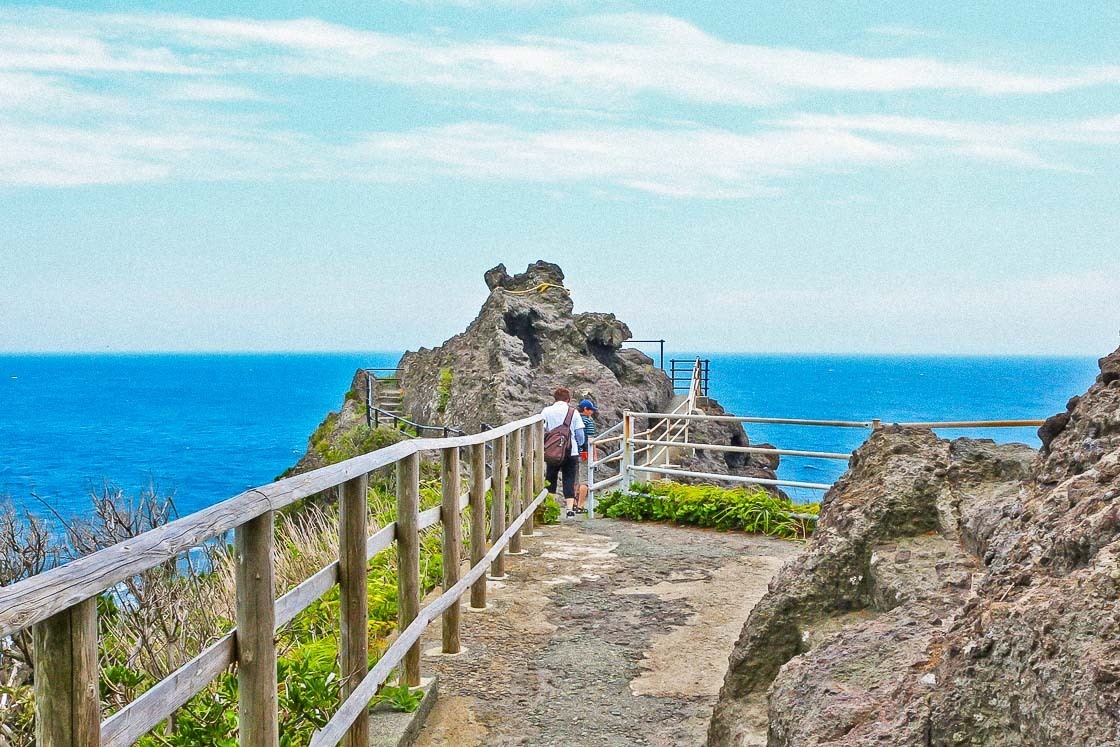
Traditional plaster walls in Matsuzaki
The town of Matsuzaki is known for its fireproof and wind-resistent plaster-walls, which were commonplace in Japanese homes during the feudal period. The most common way of adding plaster was shaping it into a diamond pattern all across the wall. Some plasterers would also show their appreciation for a job by adding a bit of plaster art which can also be seen on storehouse doors. A number of these walls have been preserved, and the Namako Walls Street is where visitors can see many of these plaster walls. A few houses along the street and in the nearby area are open to the public.
Matsuzaki is also the birthplace of Irie Chohachi, a famous master plaster artist during the 18th century. About 50 of his works can be seen at the nearby Izu Chohachi Art Museum, which also explains in more detail about plaster art.
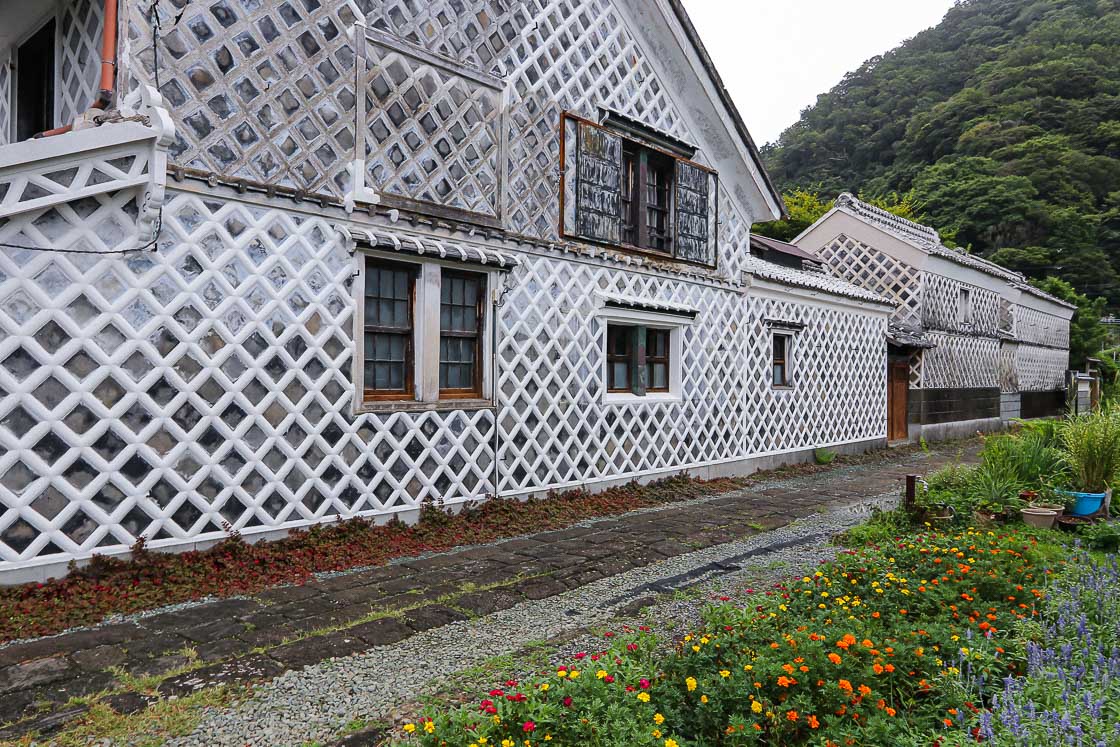
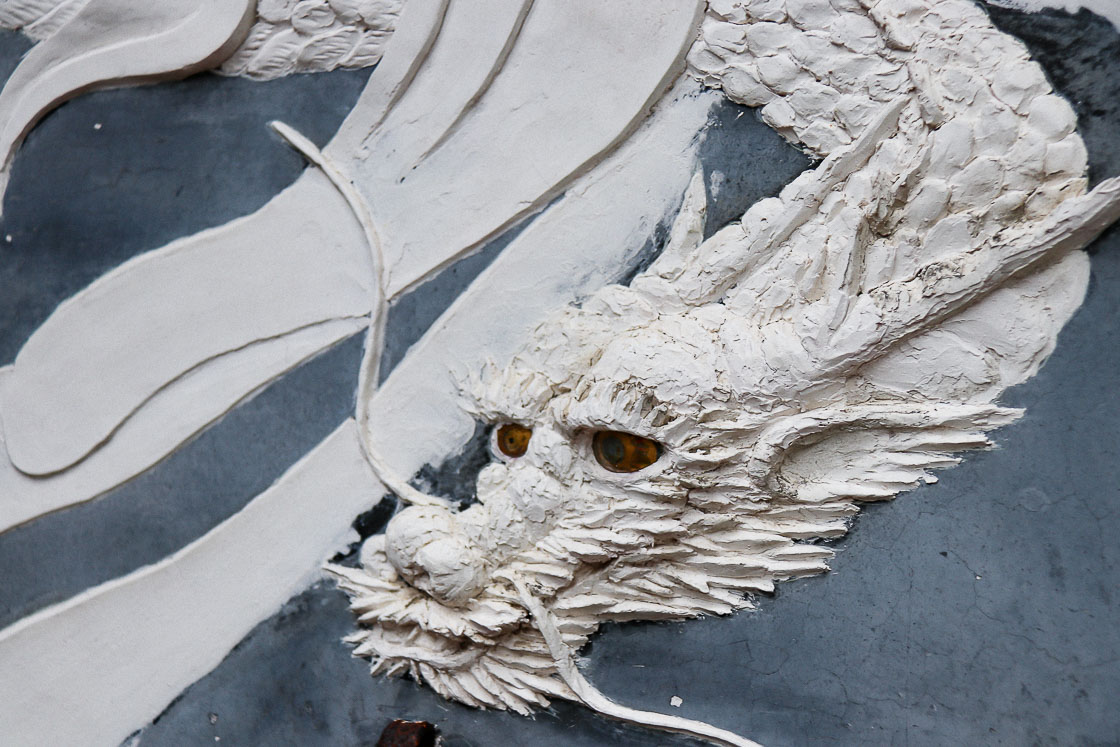
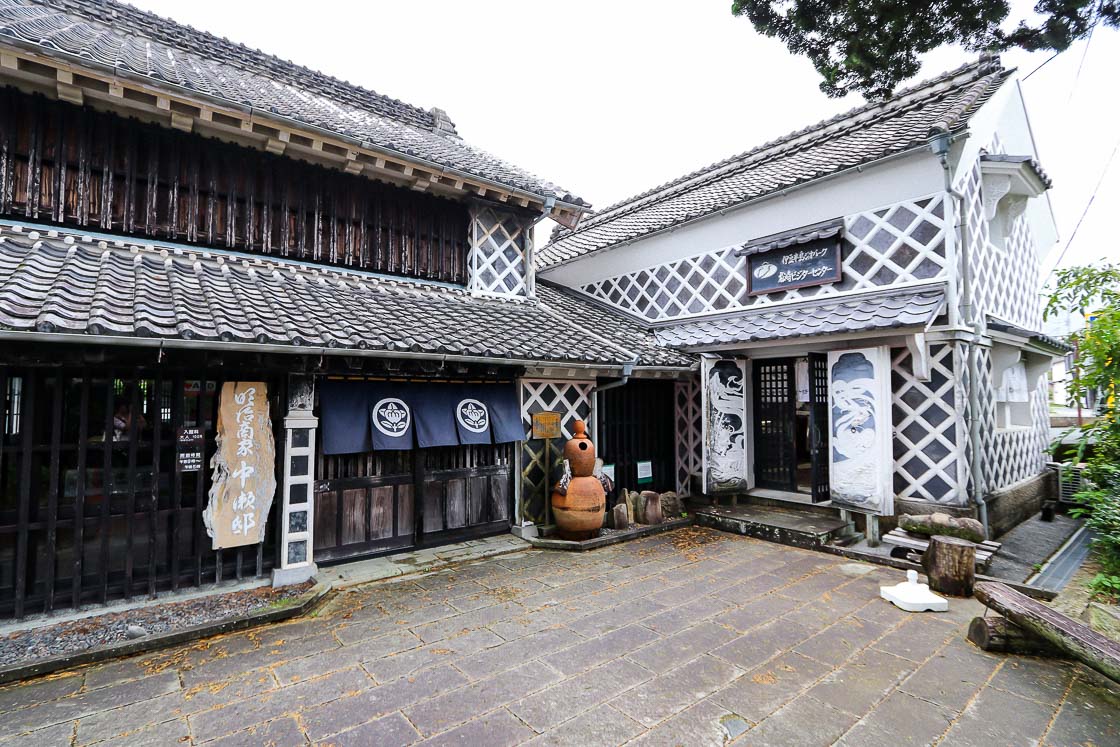
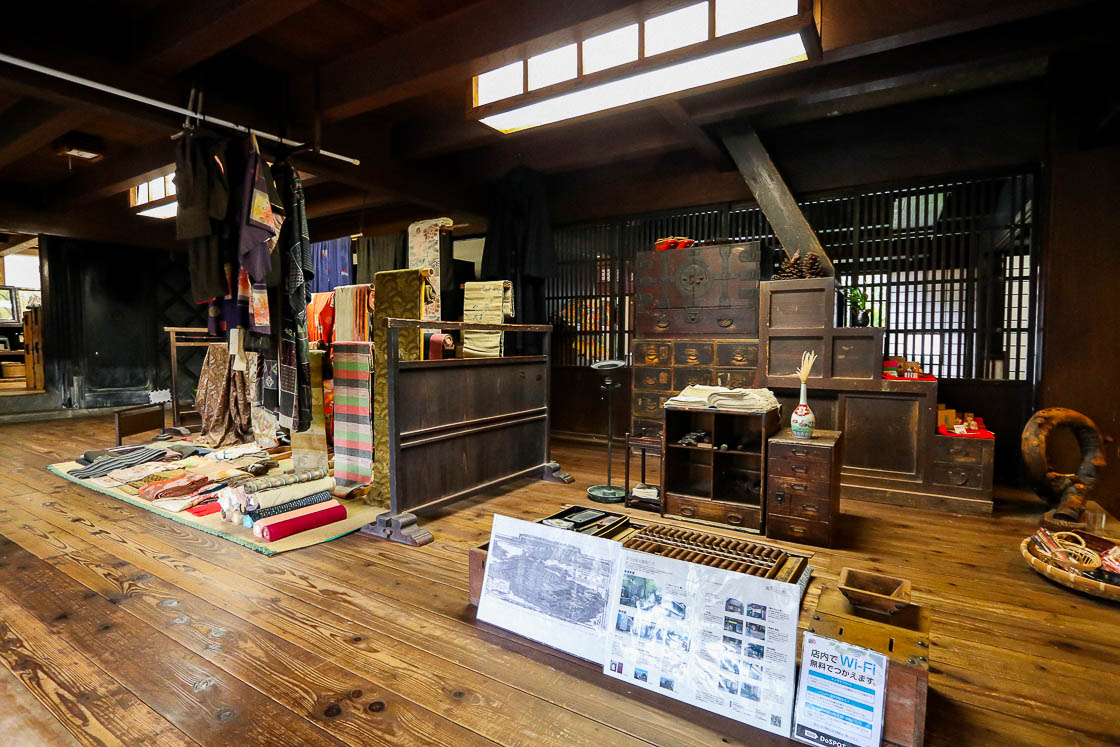
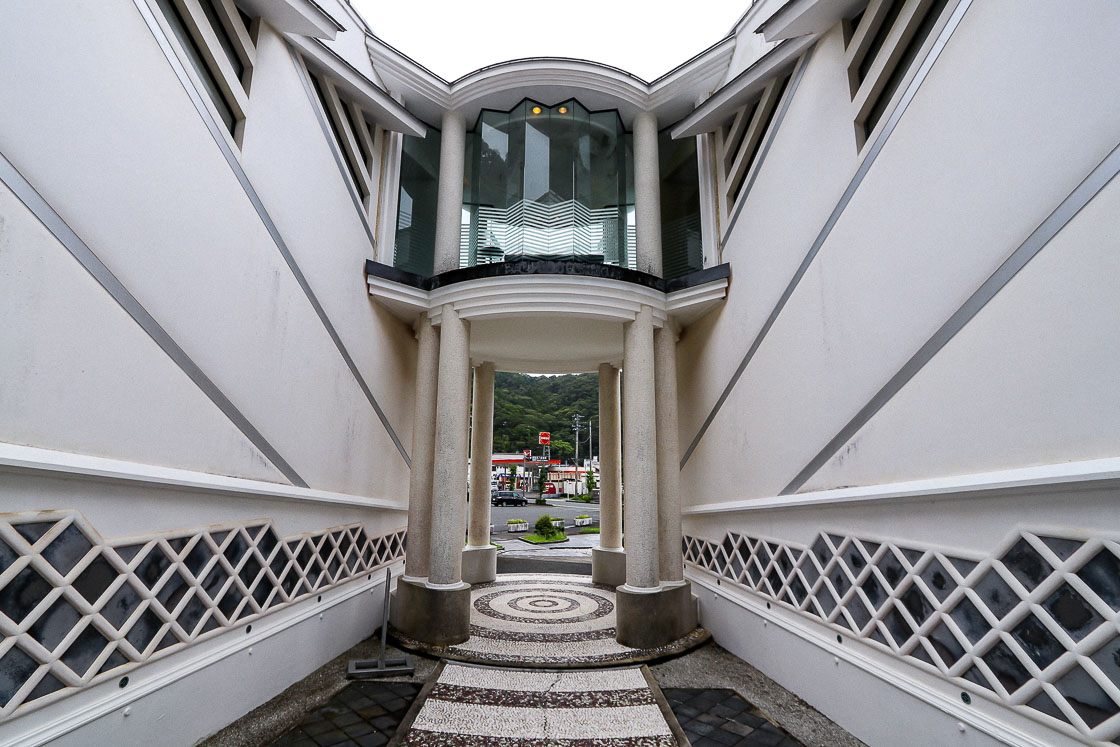
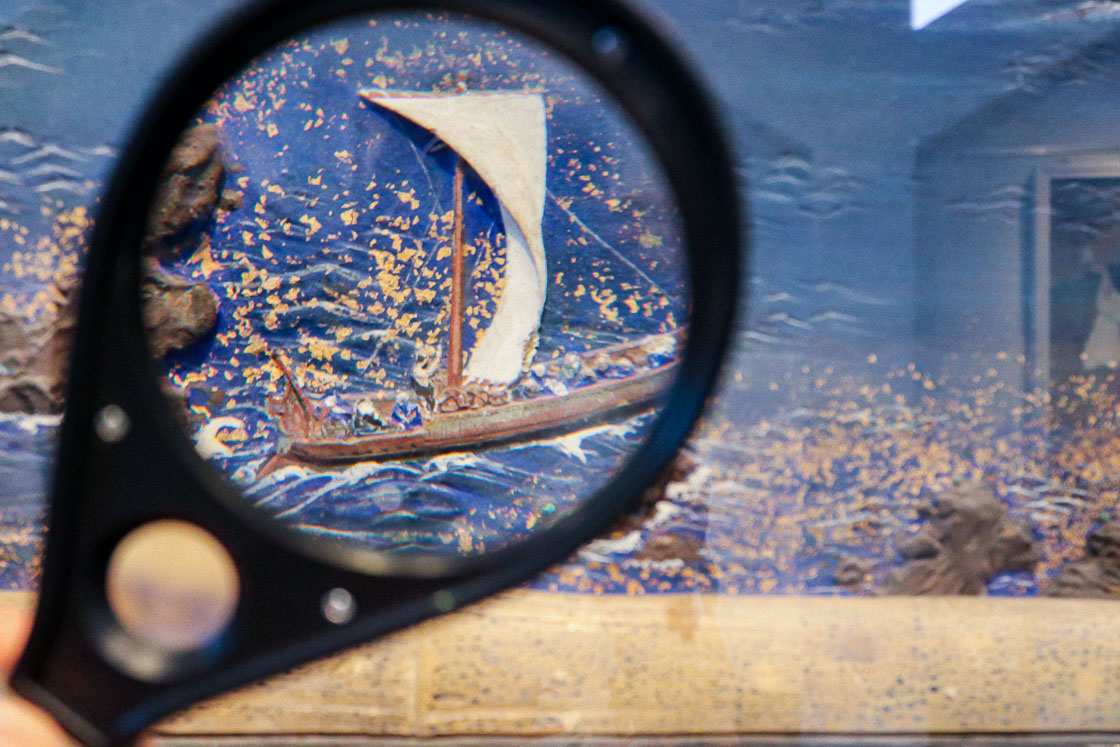
Dogashima Coast in Nishi Izu
The Dogashima Coast is a stretch of shoreline along the western coast of the Izu Peninsula where large rock formations can be seen in the water. Attractions in Dogashima include Dogashima Beach, which is popular in the summer, Tombolo Land Bridge, a strip of stony land that connects the mainland to a small cluster of rock formations in the water, and sightseeing cruises to the surrounding sea caves. All of the attractions are within walking distance from central Dogashima where the bus terminal is. There is a hiking trail along the coast that provides a closer look at the geology of the coast, and there are information panels explaining how the area was formed.
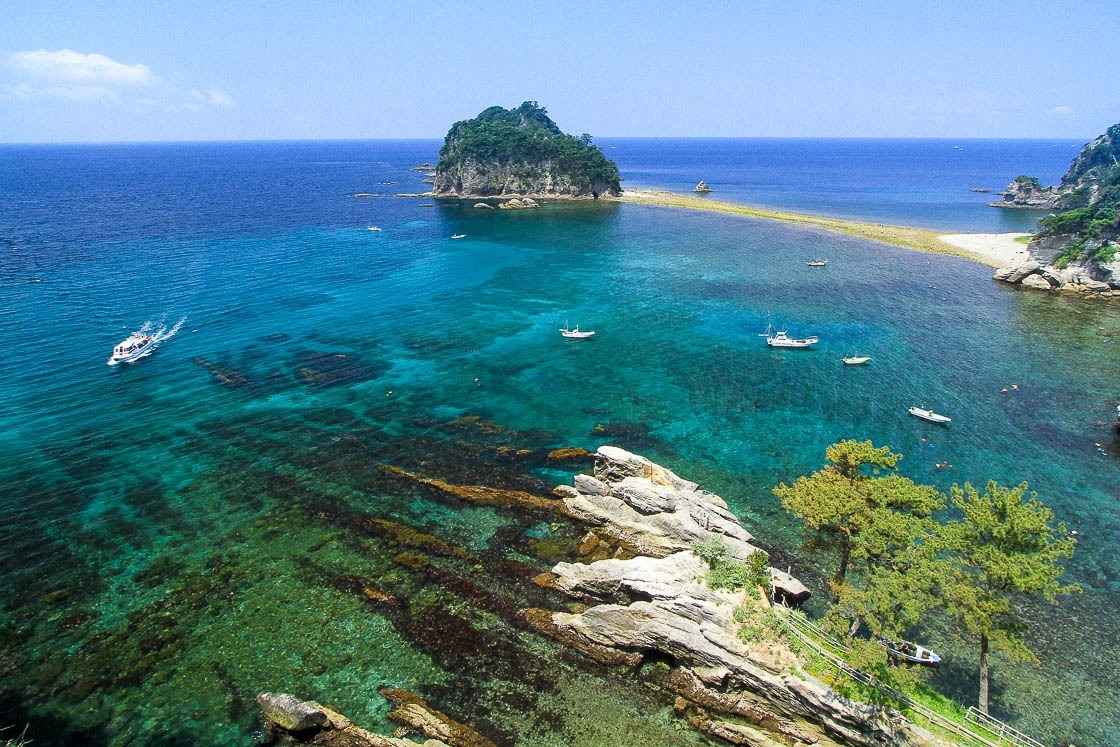
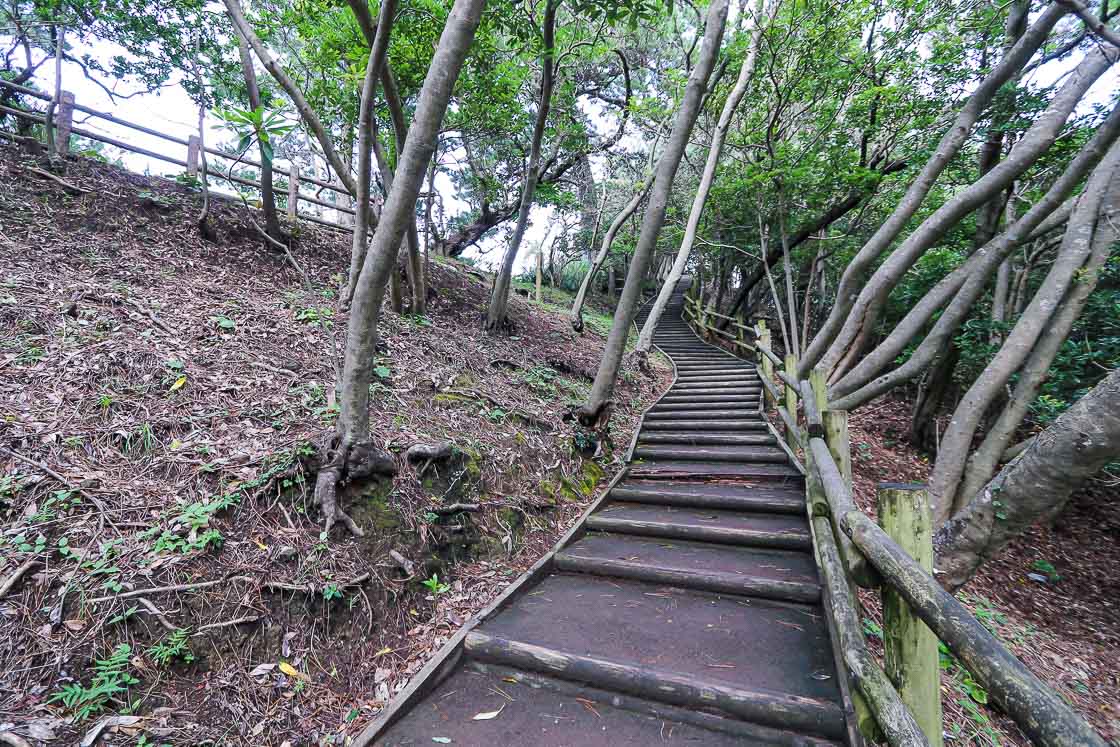
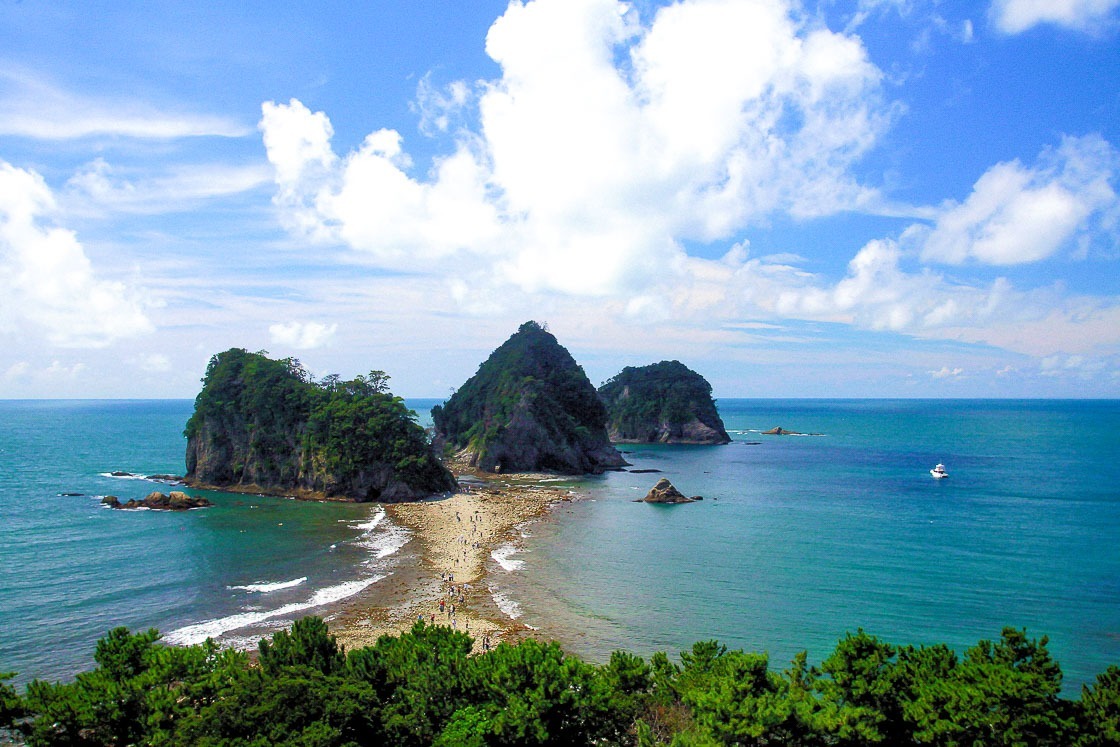
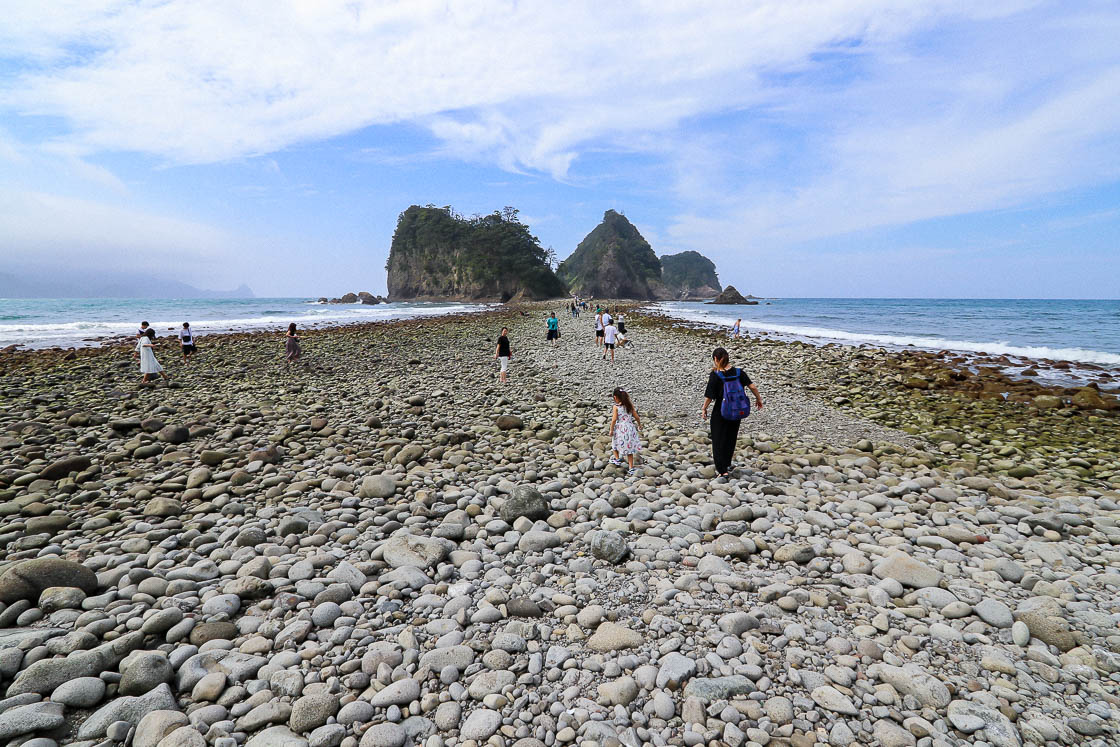
Panorama Park with views of Mount Fuji in Izu no Kuni
The Panorama Park is located atop a 452 meter tall mountain in the northern end of the Izu Peninsula. Its elevation and location allow for impressive views of Mount Fuji and Suruga Bay. A cafe terrace, footbath and a number of short walking trails can be found at the peak. Visitors can also look forward to the seasonal flora in combination with the view of Mount Fuji. The attractive park can be reached by ropeway, which takes about seven minutes to travel the 1.8 kilometers between upper and lower stations, and affords views of the town and the surrounding mountains along the way.
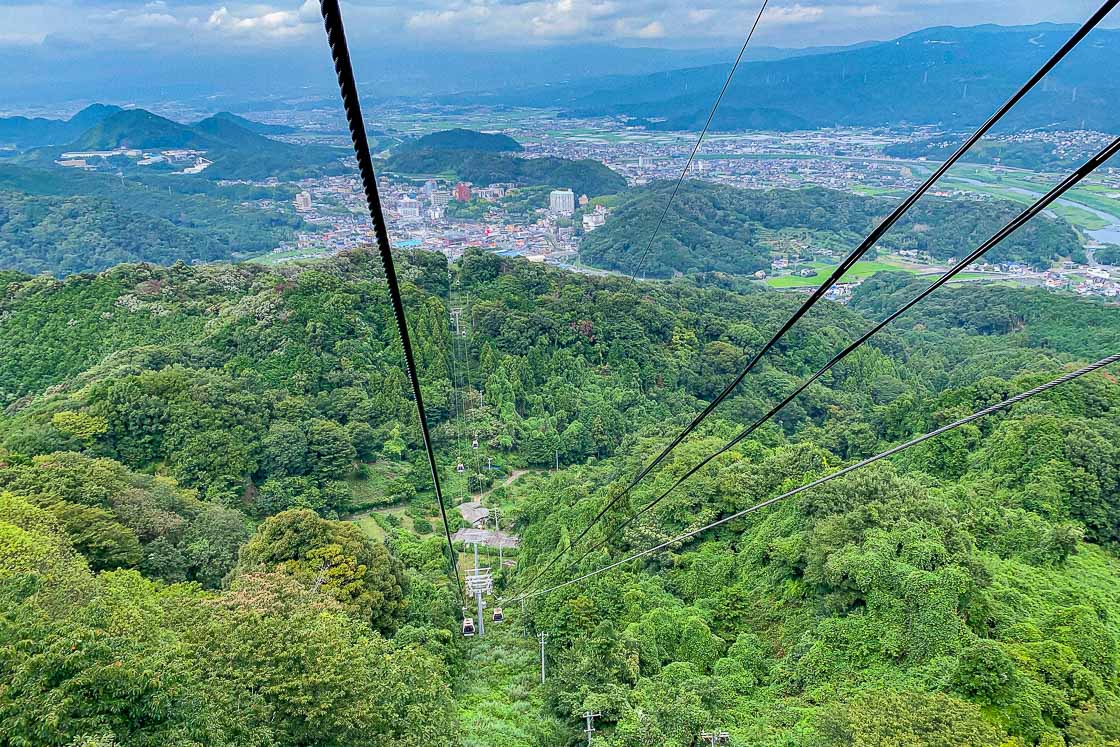
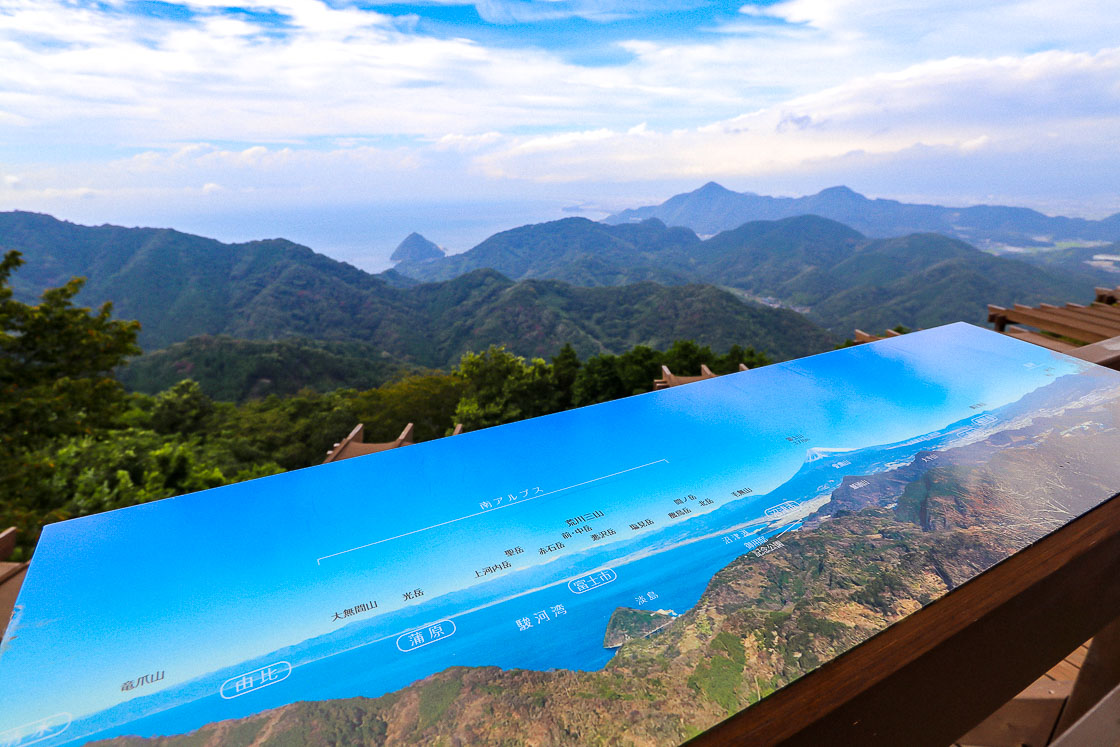
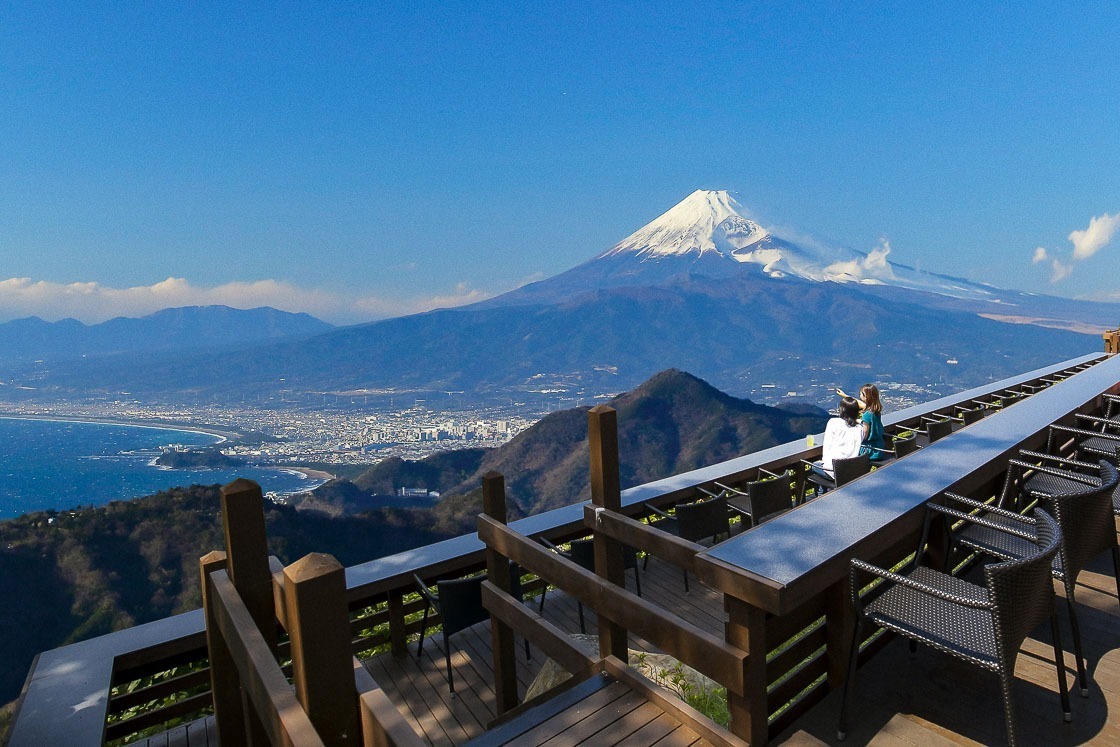
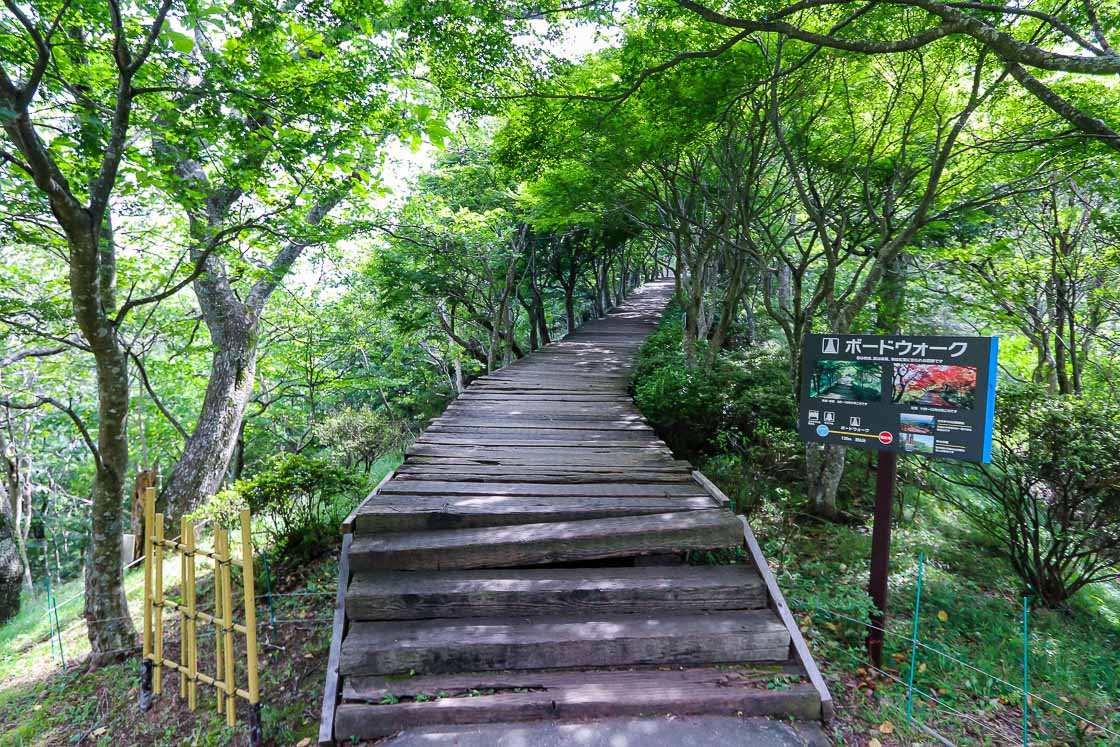
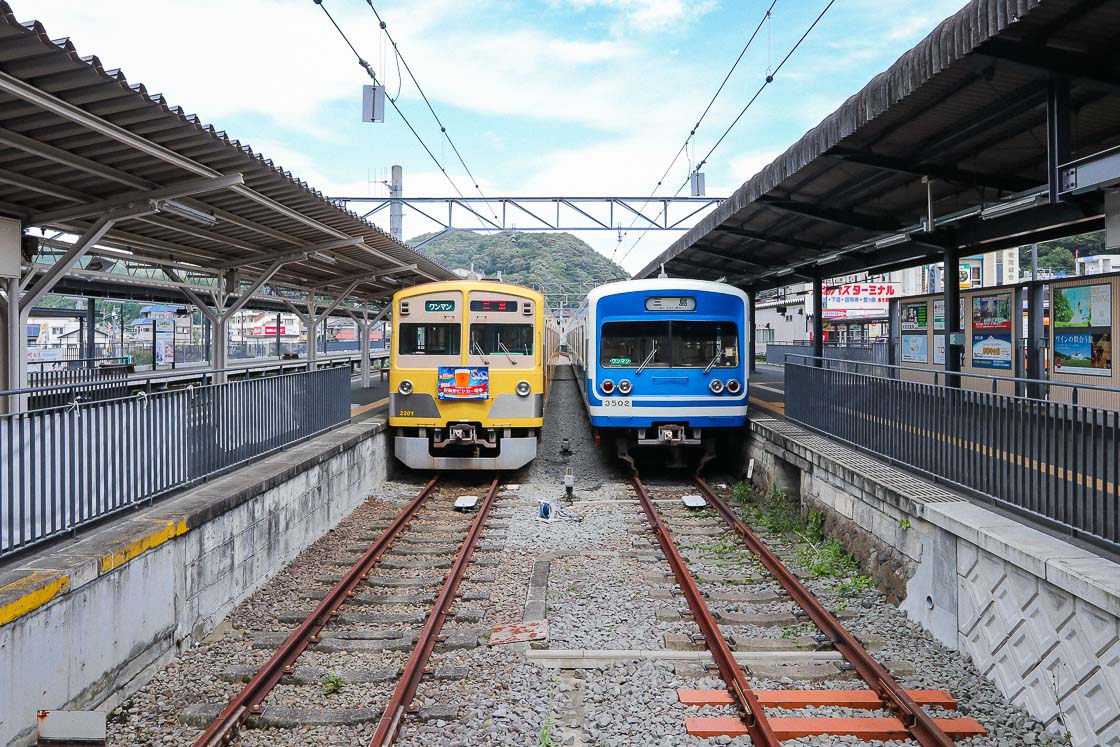
Mishima Shrine in Mishima
Mishima Shrine (Mishima Taisha) is the Izu region's highest ranked shrine and where the area got its name from. The shrine lies on the old Tokaido road which linked Tokyo and Kyoto during the feudal period. It is located at one of the main gateways into the Izu Peninsula.
The importance of Mishima Shrine goes back centuries and is also closely linked to the first Kamakura shogun, Minamoto no Yoritomo, who lived in exile in Izu following his father's military losses against the Taira Clan. A ceremony and parade in August reenacts Yoritomo raising his army in Izu and successfully making a first military win against the Taira Clan as part of the shrine's main festival. The shrine complex is fairly large, and the treasure house also displays many documents and artefacts relating to the shrine.
On the way back to Mishima Station, the Genbei River Seseragi Walking Trail makes for a lovely shady riverside stroll away from vehicular traffic.
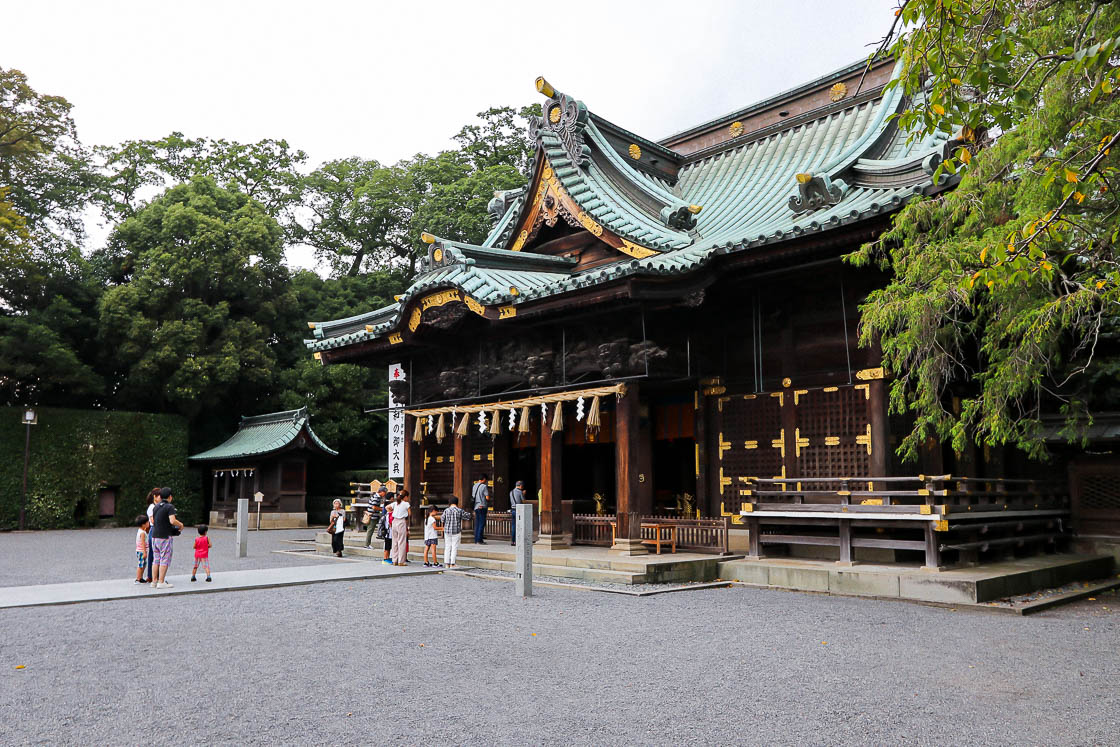
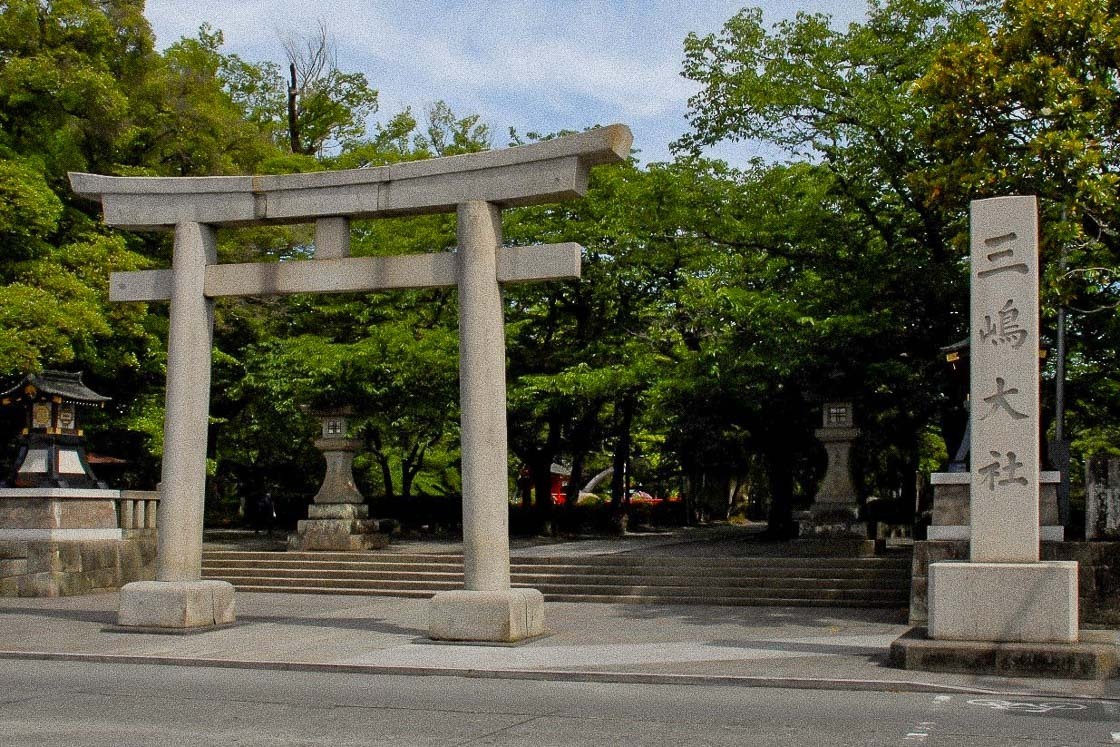
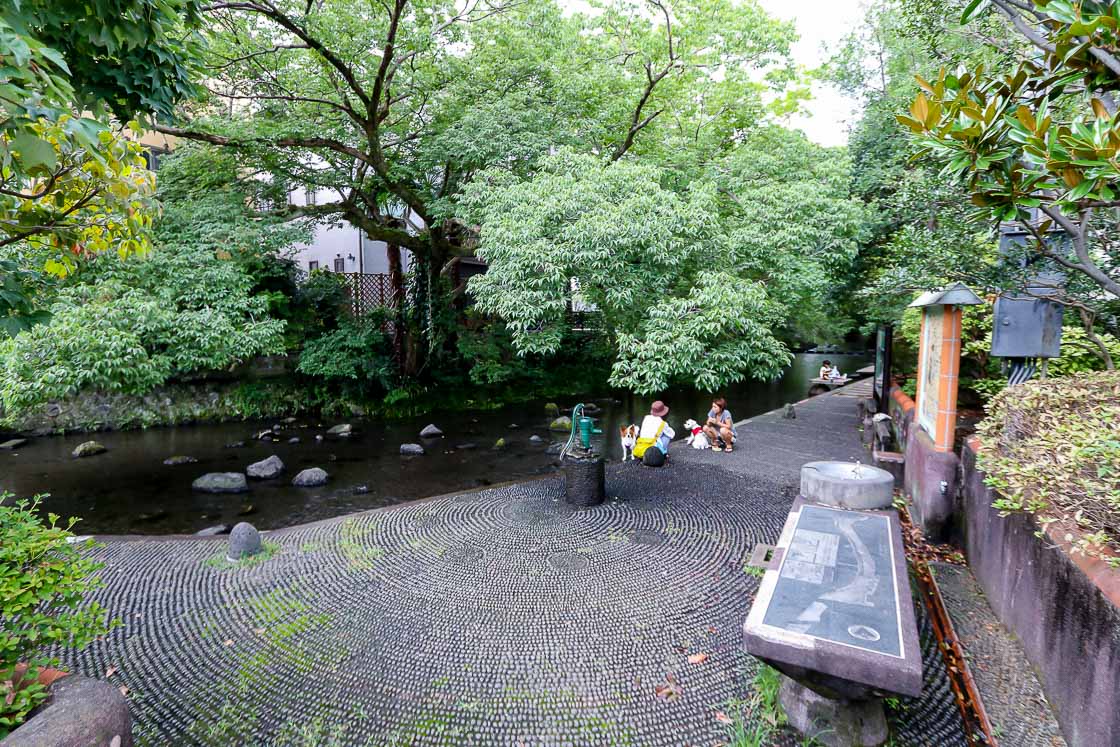
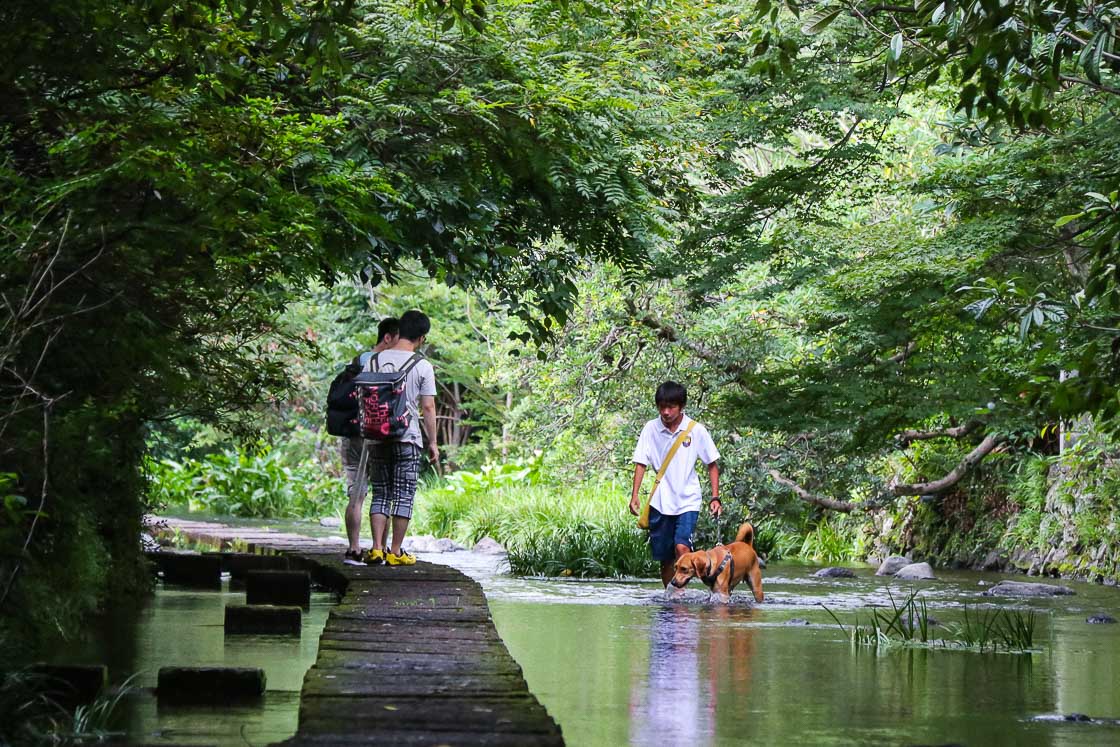
Access
The Izu Peninsula can be accessed from Atami and Mishima stations on the Tokaido Shinkansen. The one way journey from either station takes about 45 minutes from Tokyo Station and costs around 4000 yen. Once in the peninsula, the Izu Dream Pass and the Minami Izu Free Pass offer a variety of transportation coverage depending on where you go.
There are three versions of the Izu Dream Pass, each providing a different coverage area.
- The Izu Dream Pass Koganeji Route covers the Izukyu Railway between Ito and Shimoda, buses between Shimoda, Matsuzaki and Toi, and the ferry between Toi and Shimizu. It costs 3700 yen and is valid for three consecutive days.
- The Izu Dream Pass Wasabiji Route covers the Izukyu Railway between Ito and Kawazu, buses between Kawazu, Shuzenji and Toi, and the ferry between Toi and Shimizu. It costs 3900 yen and is valid for three consecutive days.
- The Izu Dream Pass Fujimiji Route covers the Izu-Hakone Railway between Mishima and Shuzenji, buses around Shuzenji and Toi, and the ferry between Toi and Shimizu. It costs 2800 yen and is valid for two consecutive days.
The Minami Izu Free Pass covers buses around the southern Izu Peninsula between Shimoda, Irozaki, Matsuzaki and Dogashima. It costs 2790 yen and is valid for two consecutive days. The bus pass can be purchased at the tourist information centers in Shimoda Station, Matsuzaki and Dogashima.

